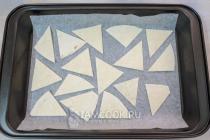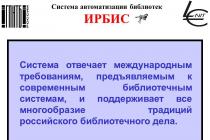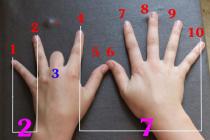Only Samsung has succeeded in squeezing out the iPhone. Apple phone, like a partisan, appeared somehow suddenly, immediately and permanently. Only after a couple of years more or less adequate answers began to be issued. And the first Galaxy S did show up a couple of months before the iPhone 4 was announced in 2010. But the Samsung smartphone turned out to be very successful and popular. He was able to "prepare a clearing" for, released a year later.
New Samsung flagship has become a noticeably louder event in the mobile market. Despite the rather high cost, its sales turned out to be noticeably higher than that of its predecessor, and also higher than that of direct competitors. Unless he did not catch up with the iPhone, but came close to it. Galaxy S II has become a real threat for him, as well as a headache for other manufacturers. In light of such a successful smartphone, it was difficult to think of how the Galaxy S III would please us. Now we can find out.
In fact, common features of a smartphone Samsung Galaxy The S III could have been introduced on earlier products as well. For example, for the South Korean market, there is a modification of the Galaxy S II with an HD screen. The first device with Android 4.0, distinguished not only new version OS, but also a 4.65-inch Super AMOLED display. It also looks like the i9250, so the i9300 Galaxy S III hasn't gone very far. Obviously, it was the "nexus" that was taken as the basis.
But, of course, the new flagship has a new, more pleasing to the eye design, certain unique features, and announced it with much greater fanfare. Samsung even refused to show it at MWC 2012, where its main competitor was released. Htc one X. The South Korean company made it clear that it is above this, that it is not like everyone else and its new product deserves a presentation no less loud than the next iPhone. And so it happened in May this year, the pompous release of the Galaxy S III. What's so special about him? Was the apparatus successful? Let's see. For this, this review was written.
Design
Design approach modern phones not at all the same as it was 6-7 years ago. Big touch screen almost did not leave any space on the front panel, let alone for all sorts of "decorations", but even the controls were left with quite a bit of "space". At the same time, phones have changed a lot at the software level. Earlier, taking one or another device in hand, it was not difficult to guess what the screen would show. Now it is interesting for us not so much to "feel" as to study the installed software.
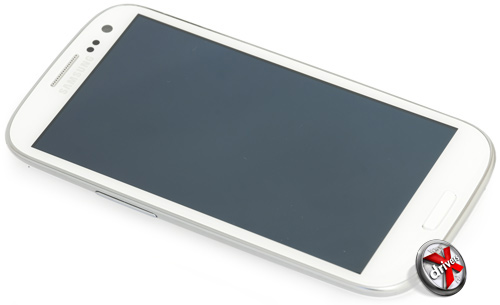
All this applies to the Samsung Galaxy S III to the fullest. The smartphone is quite large due to its 4.8-inch screen. It is not very comfortable to wear - it will not fit into every pocket. But, despite its impressive dimensions, the S III does not weigh very much - 133 grams. Not a record low weight, but the device does not pull the hand off, you do not get tired of wearing it. In any case, men should not have problems.

Unlike Galaxy Nexus new flagship Samsung has a smoother, rounded body. Its upper and lower ends are noticeably rounded, and the transition to the back cover is made noticeably smoother - the side edges do not cut the palm at all. The phone fits perfectly in the hand and does not slip out, although it has a lacquered back cover. She, by the way, quickly starts to break, but does not lose its presentation due to the white color. By the way, it is also covered with scratches, although not very actively. Note also that due to the small thickness of 8.6 mm, the smartphone is very comfortable to carry around with your index and middle fingers.
The Galaxy S III is still available in two colors: Marble White and Pebble Blue. The latter is rather atypical for the modern market, but nevertheless it is white that is more noticeable. Along the end, it has a light gray edging made to look like "scratched metal". However, the similarity with this material is quite small - you don't have to look closely to recognize plastic in it. Moreover, you need to take a closer look to see its "scratched" texture.
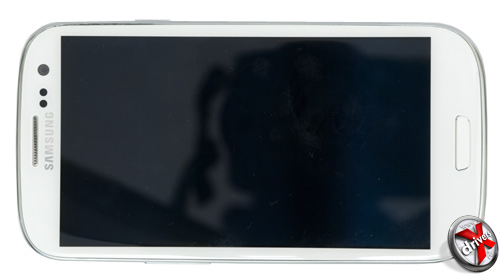
The entire body is made of plastic. The plastic is clearly of high quality, although not very thick. However, we do not doubt its strength. Another thing is that the main competitor of the Galaxy S III, HTC One X, looks and feels a stronger body, and even one-piece. In general, there were earlier rumors that Samsung would introduce the Galaxy S III in a case made of partially ceramic. But, apparently, the cost of the product turned out to be very high. It is possible that in the future there will be fashionable ceramic versions of the South Korean flagship.
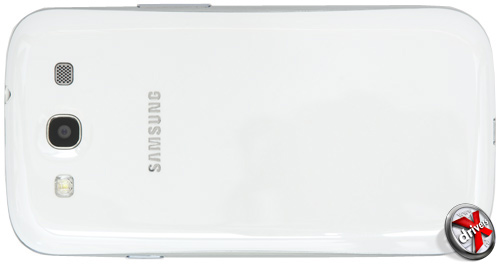
The build quality was decent, but not perfect. In particular, we noticed a noticeable backlash on the upper and lower ends in the area of the connectors brought out there. However, this can only apply to our test specimen, which passed through many hands before us, which squeezed, pressed, rubbed on different surfaces and did many different good and not so things.
But in general, the appearance of the Galaxy S III does not cause a wow effect. Yes, it looks good, modern and even new, but, in our opinion, HTC One X is a better solution in this respect. However, not everything is measured by design, right?
Connectors and controls
Remembering the Galaxy Nexus, as well as the lack of any controls on its front panel, the same could be expected from the Galaxy S III. But no, it didn’t grow together, as they say. Samsung has clearly decided to port its proprietary solutions to the new flagship.
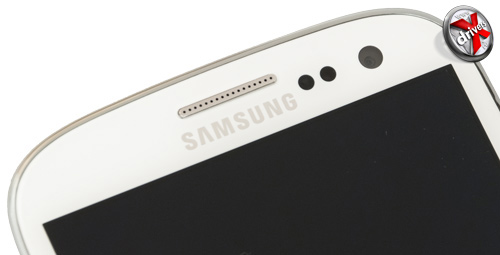
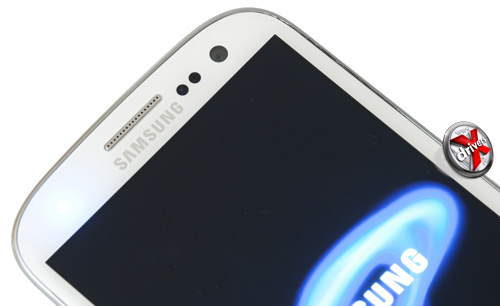
The bezel at the top of the elements is more conventional. In addition to the already standard speaker, camera, light sensor and proximity sensor, there is an LED. It is located to the left of the speaker and is not visible until it lights up. Its color can be red, green or blue, depending on the operating mode of the phone. It mostly lights up while charging.
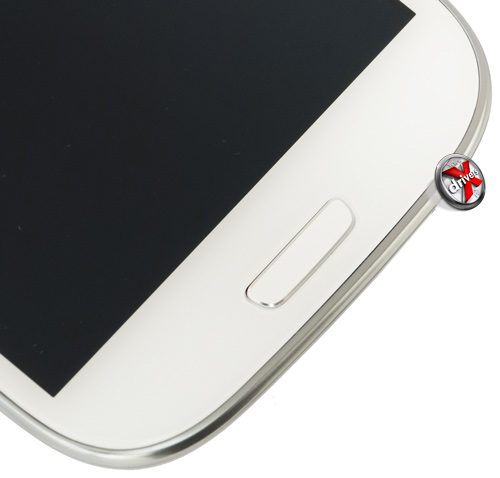
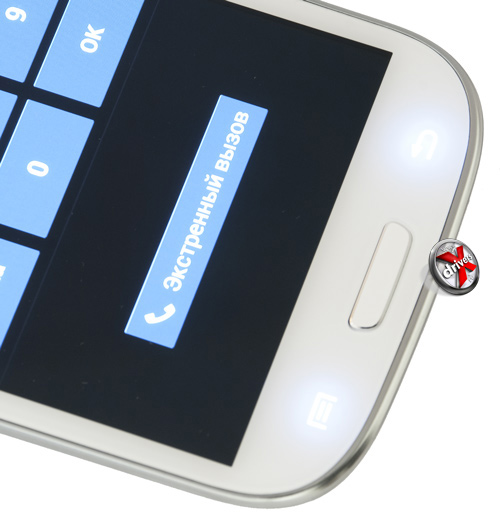
Below are three that have already become a business card Samsung buttons- one, large in the center, physical and two sensory on the sides. Their functions have not changed in any way: menu, "Home", back. Another thing is that center button became quite narrow, although this did not affect its usability in any way. But with the side buttons, everything is less rosy. While their backlight is off, they are completely invisible. In principle, this is not critical, but it is still good to see where you are going to press with your finger. However, in the sun the backlighting of the buttons is of no use at all - they simply cannot be seen. The blue Galaxy S III may have a different situation, but this is the case with white.

A usual set of connectors and buttons is placed along the side ends. On the left are the well-protruding volume rockers.

On the right side there is a button to turn on the smartphone. Small and not very protruding, and also with a not very tight stroke - when squeezed Galaxy cases S III you can accidentally press it with your palm.
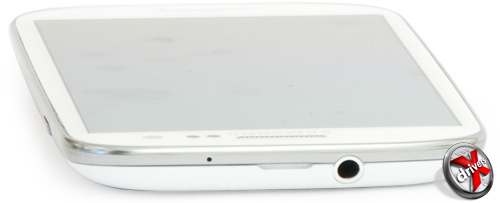
The top end is the top of the audio jack.
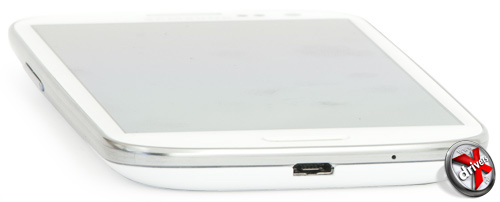
The bottom end got an uncovered microUSB port and a microphone.
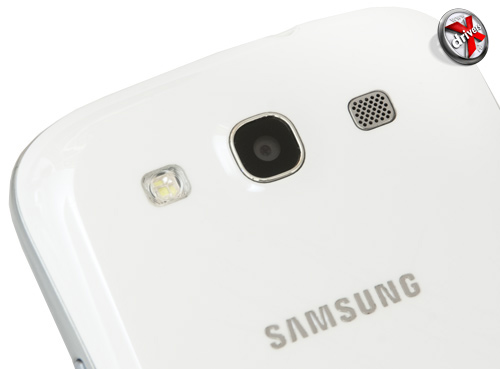
There are not very many elements on the back cover. At the top center is the camera peephole, to the left of it is the LED flash, and to the right is the speaker. Below is an embossed logo-name of the manufacturer.
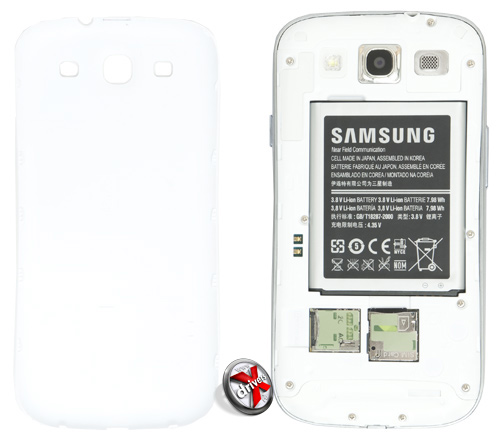
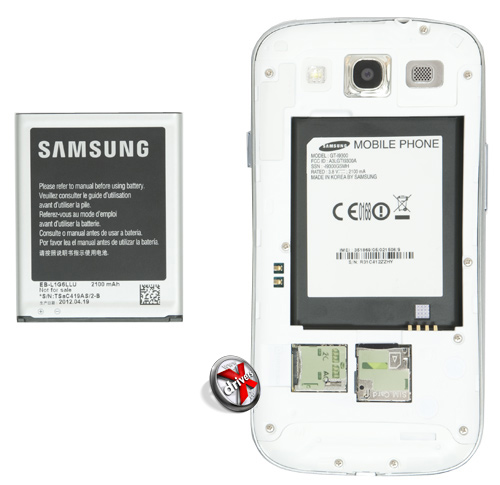
An easily removable cover hides a capacious 2100 mAh battery, as well as slots for microSD and microSIM cards. The memory card is inserted without removing the battery, but the SIM will require it. In addition, we cannot explain the use of microSIM by anything other than the trend of fashion. Yes, this format saves space, but not much. And it's just ridiculous when it is saved in such scanty amounts in such a massive smartphone as the Galaxy S III.
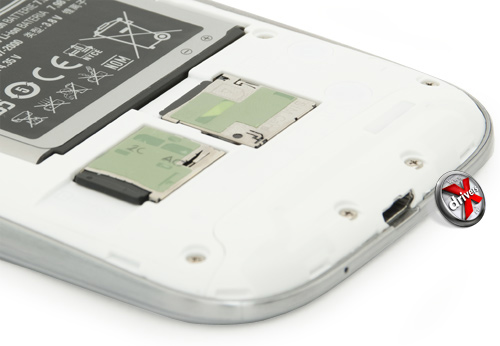
Overall, the Galaxy S III is very good in terms of ergonomics. This generally applies to all devices with big screen... However, here it is worth mentioning that the Samsung flagship is perceived and used as a phone, therefore it is often necessary to take it with one hand. And here certain difficulties may arise. So it is not always convenient to reach with your finger to this or that control element. "On the way" to the desired drawn button, you can easily click on something unnecessary, including the shutdown button. An attempt to answer a call while driving while driving has perfectly confirmed this in practice.
Accessories for Samsung Galaxy S III
Usually, after describing the design and controls, we have a small section on the configuration, if the device came to us with one. But this time we decided to move away from our format and talk a little about accessories for the Samsung Galaxy S III. This smartphone is sold in huge quantities, which is why accessory manufacturers are already paying almost as much attention to it as the iPhone.
But first, a few words about the delivery set. We really didn't get it, but we know that the phone comes in a small box containing a user manual, a USB cable, a charger and a nice headset with a volume control on the wire.
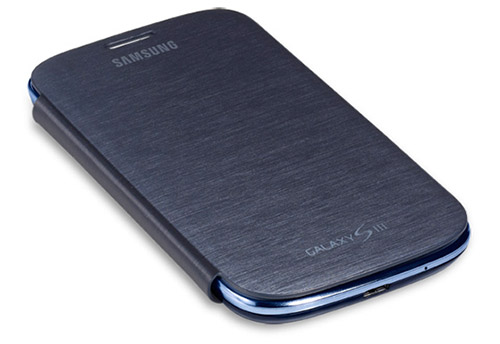
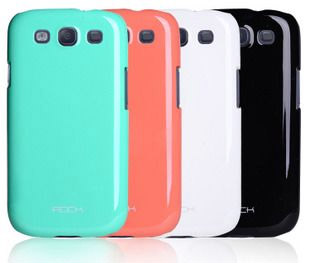
The most important phone accessory is the case. In this case, both plastic overlays for the back panel and clamshell covers are offered.
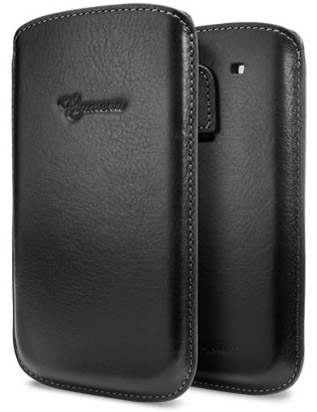
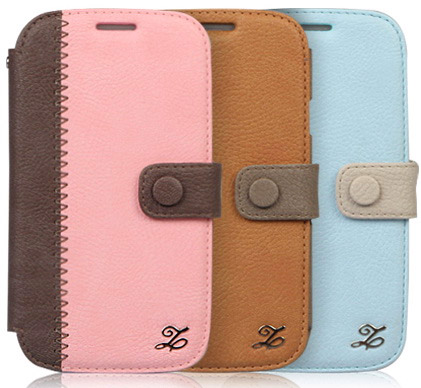
There are also leather cases with a strap and wallet-like cases. Their price varies on average from 450 to 1800 rubles.
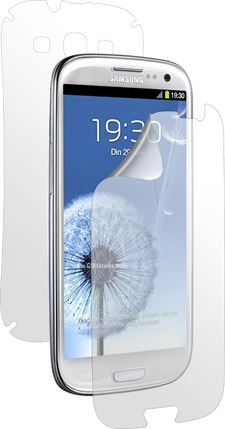
In the region of 600-650 rubles it costs protective film only 0.2 mm thick.
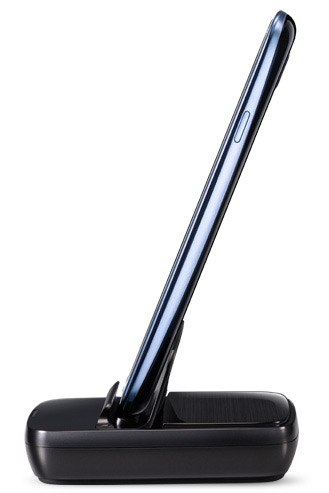
Samsung has also made a docking station specifically for the Galaxy S III, making it easier to charge and connect to a computer. However, a special device for wireless charging of a smartphone will be much more useful. It will come out later and will require replacing the phone cover, but it sounds good, right?
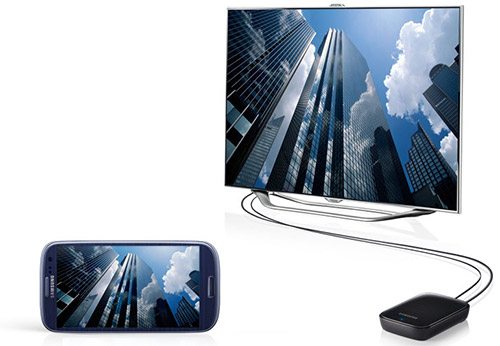
Mindful of the successful experience with Galaxy Note the C Pen is also sold for the S III. In addition, there is the All Share Cast Dongle media hub, which allows you to stream audio and video to any TV using the AllShare Cast feature, introduced with the Galaxy S III.
You can get acquainted with the full set of branded accessories in a special video shot by Samsung:
Screen
Screen at Samsung devices Is their strongest component. It is understandable - the South Korean company even makes displays for the iPhone, not to mention the leadership in the field of OLED screens. This is the last one used in the Galaxy S III, and in particular Super AMOLED HD. We have already encountered something similar in the Galaxy Nexus, and the Galaxy Note with Galaxy Tab 7.7 may offer a display with similar characteristics.
The resolution of the 4.8-inch screen of the new flagship Samsung is 1280x720 pixels. This is 306 ppi, which is slightly less than the notorious Retina, but the S III still has more desktop space. In general, it is very convenient to work with such a large display. It contains a lot of elements, and the smallest print can be read without zooming, although you have to look closely.
Now about the bad. Let's start with brightness. Remember above we mentioned the faded illumination of the touch buttons, which is almost invisible in the sun? So the screen surprised us with the same. In direct sunlight, he behaved very badly - the image became almost invisible. And the Galaxy S Plus with Super AMOLED screen, lying in the other hand, did not have such problems - the picture was seen much better. So what's the deal? The first assumption about the low brightness of the display turned out to be correct. According to our measurements, it is only 167 cd / m2. Somehow completely frivolous for such an expensive smartphone, and even from the market leader. It even showed twice the brightness - 332 cd / m2.
There are no problems with contrast, of course. The brightness level of the black point was expected - 0 cd / m 2. This is the main feature of OLED technology and it is fully implemented here. So the level of contrast can be considered infinite.
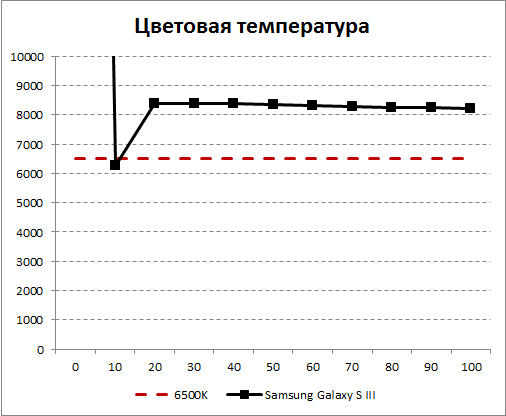
This was followed by measuring the color temperature. Here we were also disappointed. In the first position, 10% brightness, white had a temperature of 6264 Kelvin, which is just below normal and can be considered an excellent result. But, consistently increasing the brightness, we got values in the range 8200-8400K, which indicates a violation of the white balance towards blue. Although the schedule is flat, overall better than budget phones, but it cannot be called acceptable. We are talking about a flagship with the most perfect display, and therefore it is strange to see such "excesses".
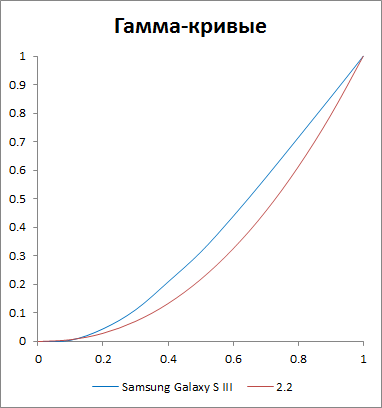
And the gamma curves remain. The resulting graph impressed us even more than the color temperature. The gamma curve of the Galaxy S III turned out to be well above the 2.2 reference curve, which indicates an overexposure of the image over the entire range of tones. Apparently, due to this, a visually greater brightness is achieved, and not at all due to the greater luminescence of the LEDs. As a result, in the dark, the picture looks bright, juicy and saturated, but in the sun everything becomes much worse. In truth, this is the worst chart we've seen so far.
Of course, all these shortcomings can be attributed to the test sample of the smartphone. It is possible that the retail version will be deprived of them at least in part. We even look forward to it.
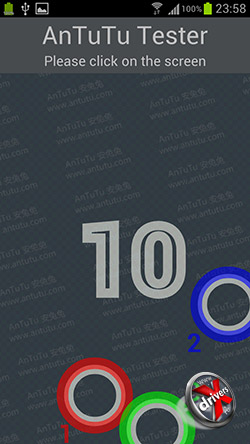
And a little about the rest of the screen characteristics. It recognizes up to 10 simultaneous touches, which is the norm for displays of this class. For protection, which has already become almost standard is used. It is 20% thinner than the past and even stronger. By the way, it is very interesting "wrapped" - slightly rounded at the edges, which looks unusual. But we do not see any practical benefit in this. To make the screen curved, like the Galaxy Nexus or, Samsung did not.
Camera
Many freshly baked Galaxy S III owners are praising its camera. In fact, the camera of the new flagship is not very different from that of the Galaxy S II. This is if we talk about the sensor, the resolution of which remains the same - 8 MP, as well as the quality of photographing.

Another thing is that software part responsible for the camera has undergone certain changes. One of the nicest innovations is the launch speed of the camera interface. It starts up in a second or two. After that, focusing immediately begins on the center point, in contrast to S II, which explicitly had to indicate where to set focus.
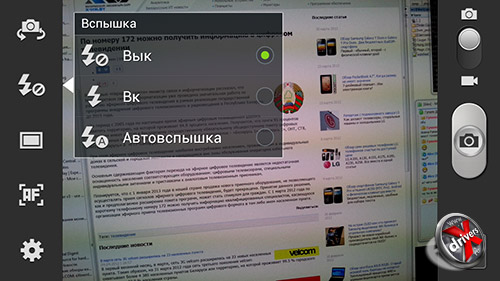
The phone is equipped with an LED flash that can fire automatically depending on the lighting, or be always on or off.
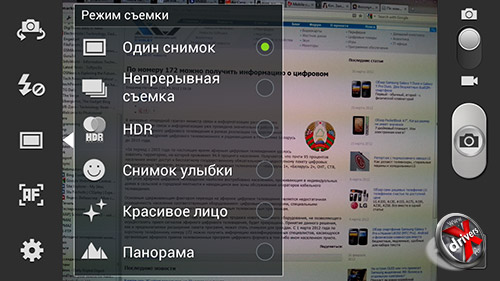
The shooting modes have also been added. For example, fashionable and relevant today appeared HDR mode.
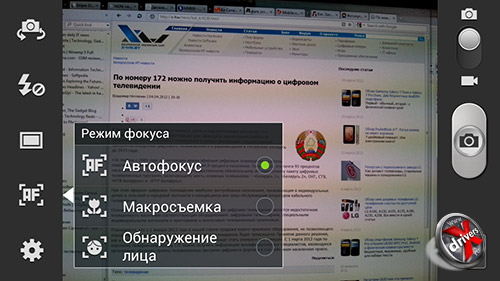
There are three standard modes for autofocus: autofocus, macro, and face search.
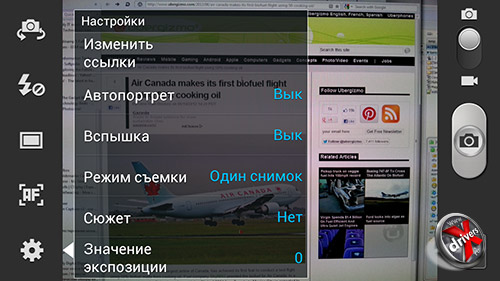
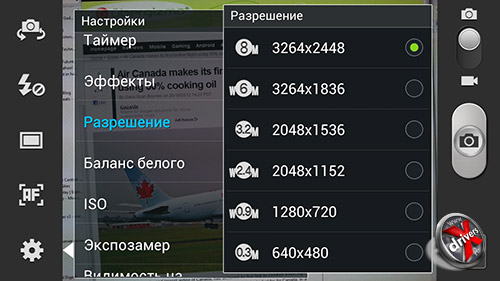
In the settings, the possibility of continuous shooting is interesting, when up to 20 frames are taken in a row. And also the Best Shot feature, which appeared in the Galaxy S III, when 8 shots are taken at once, and then you can choose the best one from them.
And now a few examples of pictures.
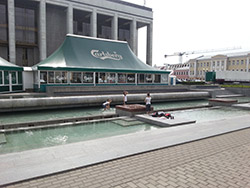
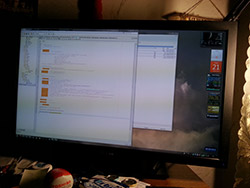
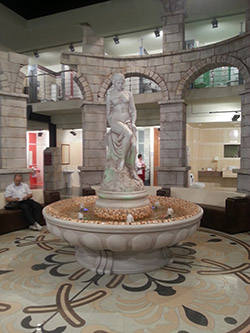

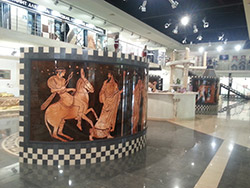
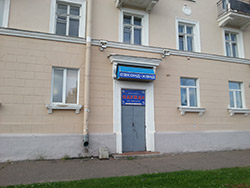
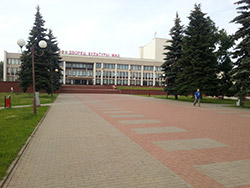
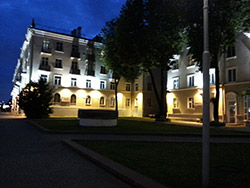
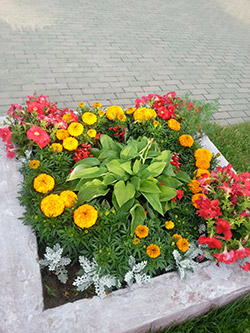

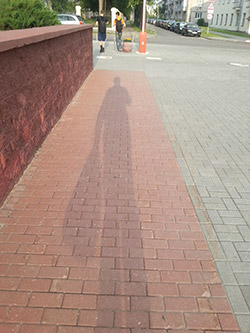
As for video shooting, there are no more settings here than in the previous version of the smartphone.
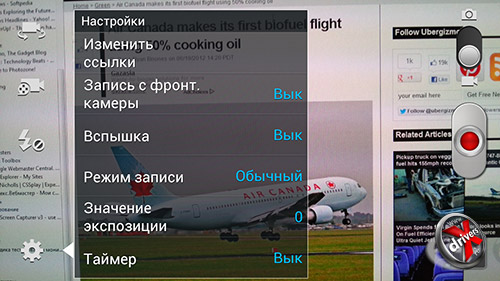
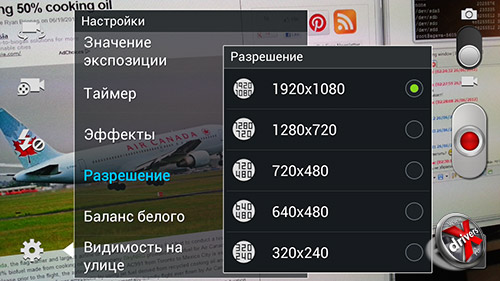
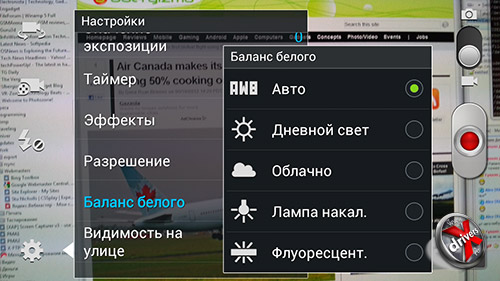
The shooting resolution can be 1920 x 1080 pixels, you can adjust the white balance.
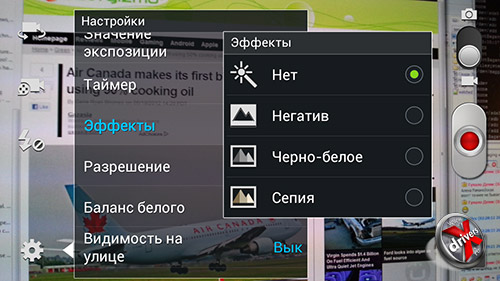
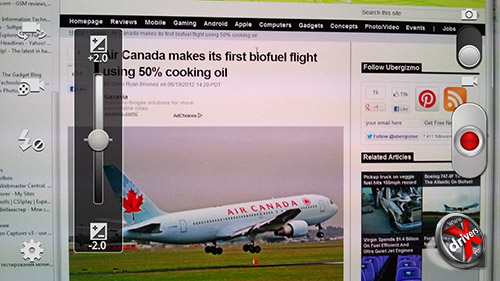
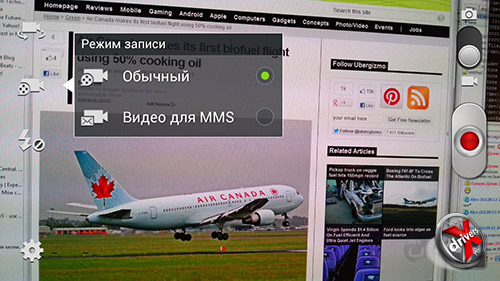
Various effects are available: negative, black and white shooting, shooting in sepia tones. You can adjust the exposure and set the shooting mode for the MMS message. An example of filming a video can be viewed here:
The front camera has the same resolution - 2 MP.
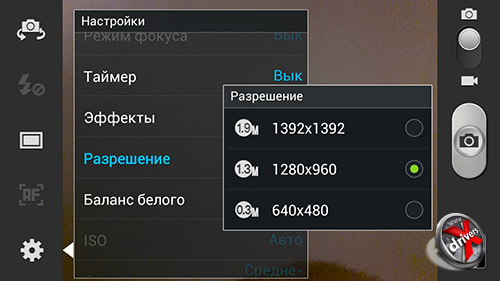
But to shoot she, in our subjective opinion, has become somewhat better. Here are the photos she took:
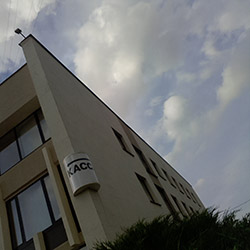

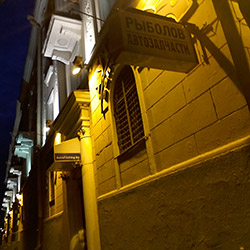

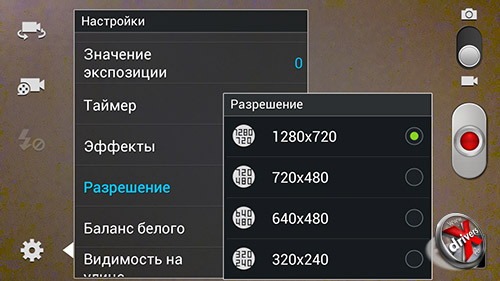
Another change associated with the front camera is the video resolution increased to 1280x720 pixels. Who needs so much high resolution for front camera, We do not know.
But in general, the video quality from the front camera is relatively good.
Samsung Galaxy S 3 specifications
Samsung Galaxy S III cannot be called the most advanced smartphone on the market. Competitors presented their counterparts even before its announcement. Its main rival is the HTC One X. However, below we will give a comparison table with the Galaxy S II, since it will be compared with it in terms of performance. It's also interesting to see how flagships evolve.
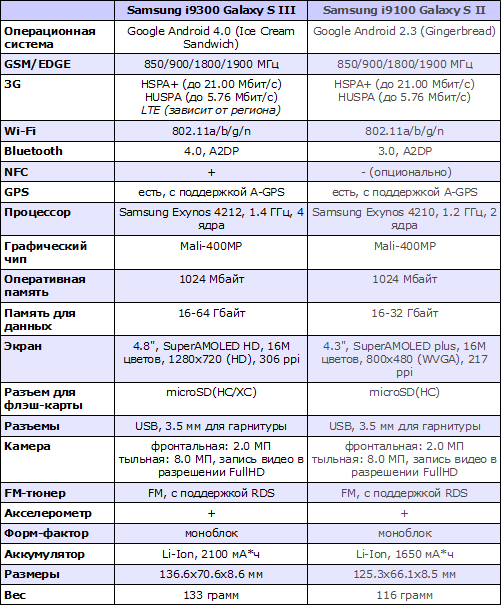
There are plenty of differences between the flagships of this and last years. First of all, they are hidden in the processor. Samsung still uses its own production SoC, but already more advanced. Exynos 4212 received four cores and operates at 1.4 GHz. The Galaxy S II also has a lower CPU frequency and half the cores. However, this is not a guarantee of multiple speed gains, especially on smartphones - even desktop computers often get by with a dual-core processor.
Despite the noticeable upgrade of the processor in terms of the graphics chip, the Galaxy S III has not changed at all. The same Mali-400MP is used, which Samsung licenses from ARM. The recently introduced may appear in an updated version of the S III. But the fact remains - for games, the new flagship is a good solution, but not the best. The HTC One X with its Tegra 3 looks better in this regard.
The amount of RAM did not grow, which also became a kind of small disappointment. Rumors talked about its growth to 2 GB. While we had the phone, we often saw that it occupied up to 700-800 MB of RAM - it's hard to call it a small value. One more gigabyte really won't be superfluous.
The volume of the built-in flash memory has also been increased. The minimum remains the same - 16 GB, and the maximum has grown to 64 GB. Also for the first time there was support for microSDXC memory cards, the capacity of which can reach 2 TB. However, Samsung is still talking about compatibility only with 64 GB cards.
Communication interfaces have been updated, but not very significantly. This is how LTE support appeared, but only for certain markets. So far, this will not be delivered to Russia. There is also an LTE variant of the Galaxy S II, but it is very rare. As expected, Bluetooth has grown to version 4.0, which theoretically should be more energy efficient.

Every Galaxy S III has NFC support, although it was optional on the S II. This is required not only by support from Google, but also new function S Beam, letting you drive fast exchange files between smartphones. It works via NFC and Wi-Fi Direct. With the help of the first, authorization takes place, and data is transferred through the second interface. But for the function to work, you need a smartphone with S Beam support.
It is especially worth noting the almost unchanged size of the device. It is only one centimeter taller and 4.5mm wider than the Galaxy S II. The thickness has increased by 0.1 mm. But the weight has grown more - as much as 133 grams. However, this is offset by a noticeably more capacious 2100 mAh battery.
Samsung Galaxy S III vs Samsung Galaxy S II - performance comparison
Note that the Galaxy S II was tested with Android 2.3 and not the newer iOS 4.0.
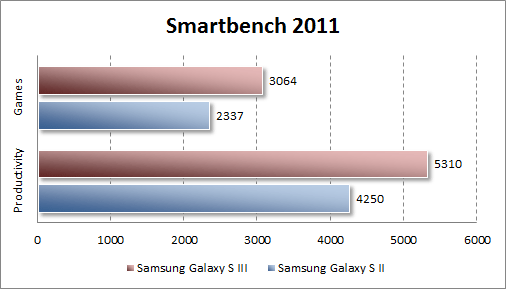
In Smartbench 2011, the Galaxy S III is clearly superior. It may not "tear" its predecessor, but it is clearly ahead of it in all respects.

The AnTuTu test showed an even more interesting result. In it, the new S III has pulled out very far ahead. Definitely, this benchmark takes full advantage of the multi-core chips, and therefore the Exynos 4212 is on top. But let's pay attention to the 2D and 3D Graphics tests - there is almost complete parity in them. This proves once again that the graphics core of the new Samsung flagship is not the fastest on the market and does not surpass last year's flagship.
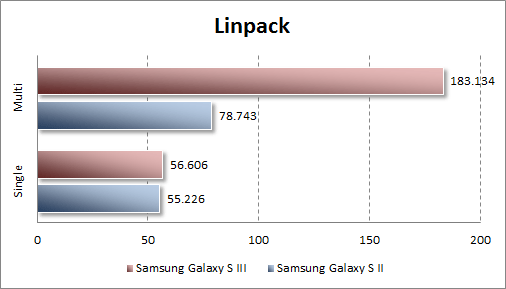
Linpack's benchmark CPU benchmark shows very impressive numbers. However, they are visible only under multi-threaded load. In single-threaded mode, the difference between smartphones is minimal. But when all the cores of the new Galaxy S III are working, it is downright out of reach - 2.5 times faster than the Galaxy S II.
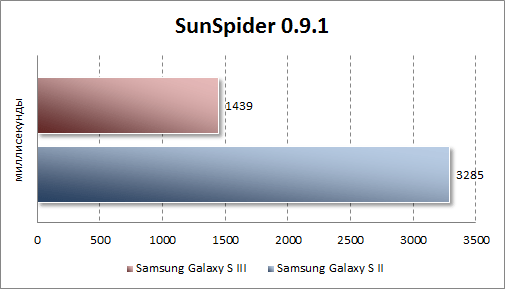

In browser tests, the Galaxy S III also shows a huge advantage over its predecessor. But here we will make a reservation that the testing was carried out in standard browsers. Android systems, and in version 4.0 its speed has been noticeably increased. So it is possible that we would get better results in the new firmware for the S II.
We will not present the results of tests in three-dimensional applications, since the electopia test common with the S II new smartphone Samsung did not pass, and we did not launch the other two on the device of the previous generation. But in general, the FPS level for NeoCore was 59.9, and for Nenamark2 - 58.8. That's a lot, but not a record high.
And compare it with, since for Galaxy testing S II this technique has not yet been developed.
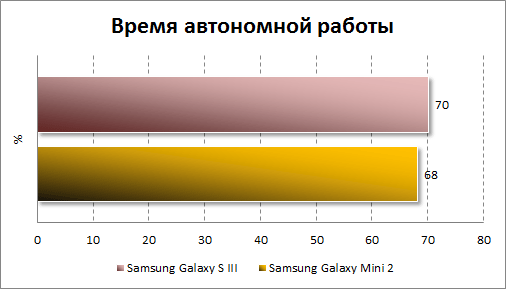
As you can see, new Galaxy S III provides autonomy at the level Galaxy Mini 2 - our record holder. It's worth mentioning right away that Mini 2 is equipped with a noticeably smaller screen, a weaker processor, graphics core... In a word, it is worse in all respects. So Samsung's new flagship has an outstanding battery life for its performance, size and weight.
Software
The Samsung Galaxy S III ships with Android 4.0 (4.0.4 in our case). This OS has already become the standard for modern devices in the middle and high ranges. At the same time, the new flagship is also equipped with the TouchWIZ shell, which is present on all Samsung devices. It is slightly different from the one that comes with Android firmware 4.0 for Galaxy S II.
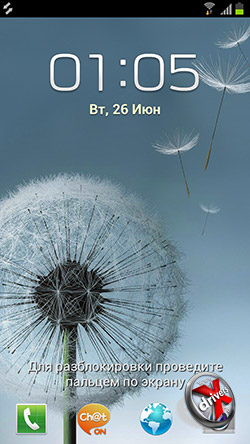
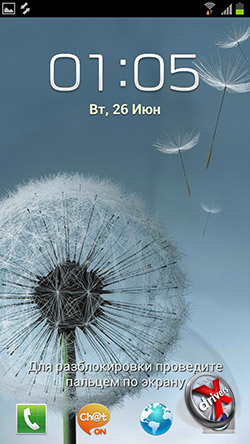
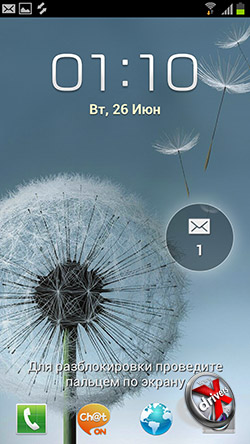
First of all, the attention is drawn to the splash made in the form of water - small waves scatter from the finger when touched. You can immediately open one of the applications by pulling the corresponding icon: phone, Chat-On, browser and camera.
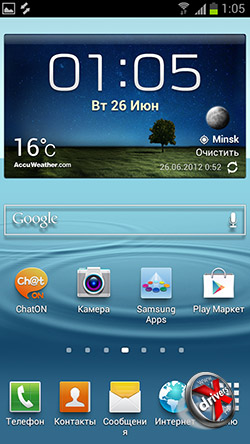
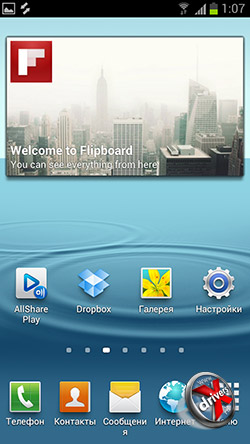

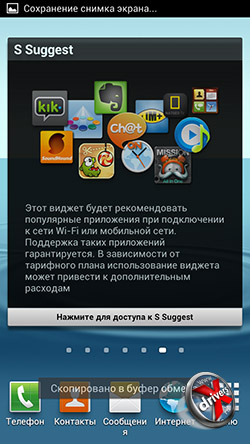
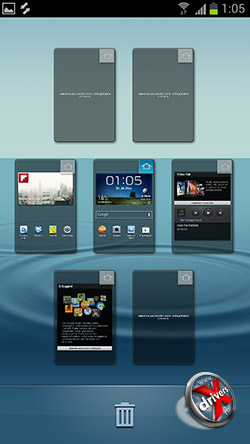
There are seven desktops. Just like before. But at the bottom there are five, not four, icons: phone, contacts, messages, internet and menus. In addition, you can now set the main desktop by placing a turquoise mark on it.
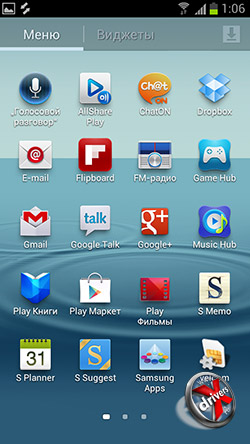
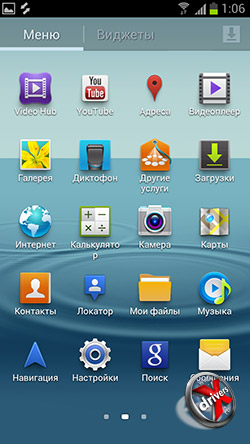
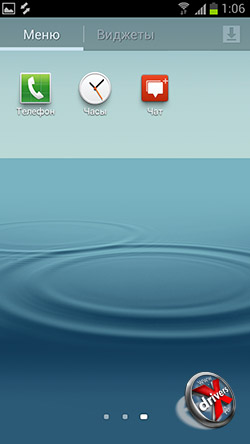
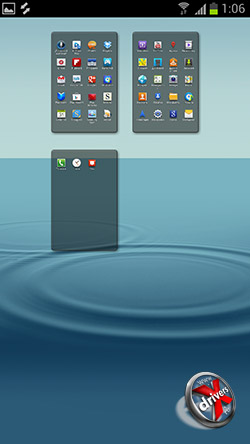
The "Menu" icon opens the list installed applications... There are 20 of them on the screen, not 16, as before. It is possible that in our sample Galaxy S III there was a non-retail version of the firmware, and therefore a couple of applications in our screenshots may not be enough.
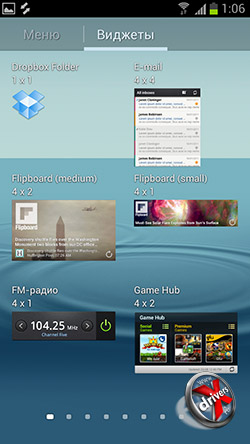
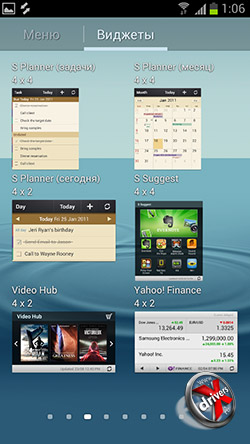

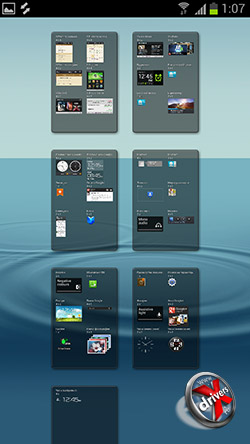
All widgets are grouped in a separate tab. This feature came from Android 3.

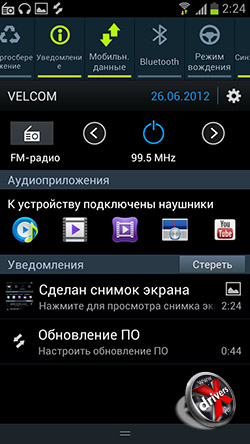
Compared to Android 2.3 and the old TouchWIZ, the notification screen looks more advanced. Indicators of enabled modes and devices (Wi-Fi, Bluetooth, GPS, etc.) are now rewound horizontally. When you plug in the headphones, a list of applications that work with them is displayed.
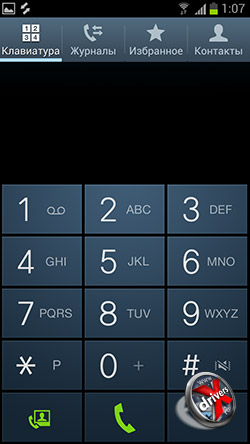
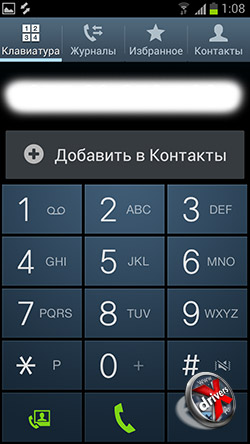

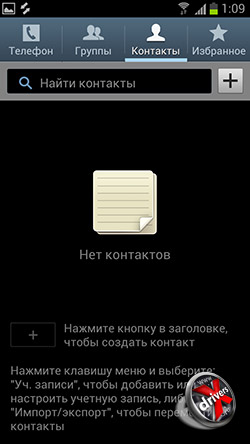
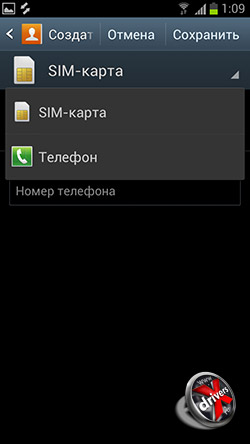
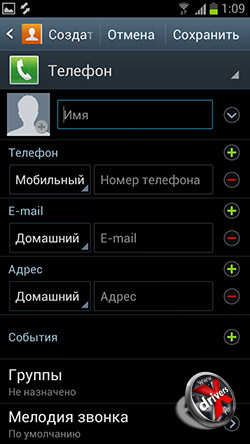
The application for making calls has large buttons, which, without a relief, are still not always convenient to press. Call log and contacts have not changed very much.


The same goes for messages. Their design has changed, and the Direct Call function has appeared. If, while typing a message, you suddenly want to call the subscriber, then just put the phone to your ear.
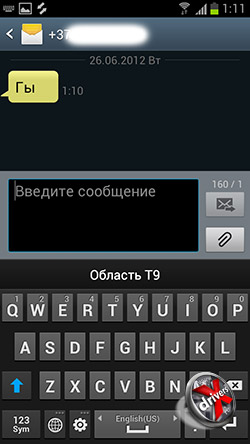
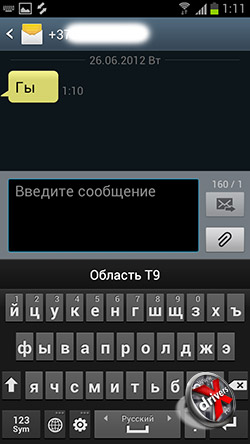
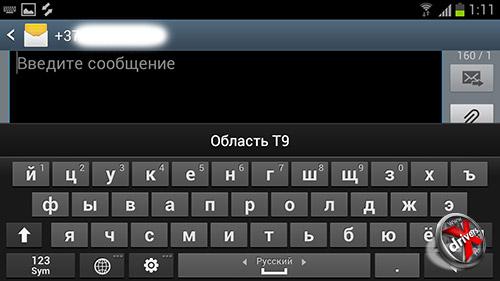
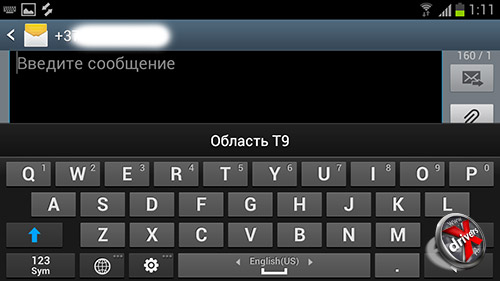
Updated a little and screen keyboard... The 4.8-inch screen is a pleasure to work with, although there are too many buttons at the bottom. It can be extremely difficult to hit the gap.
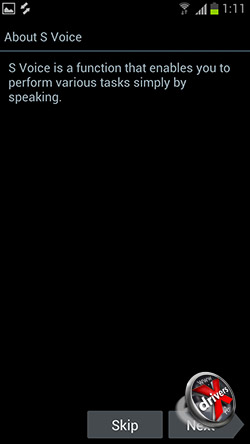
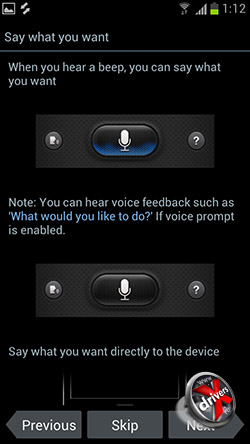
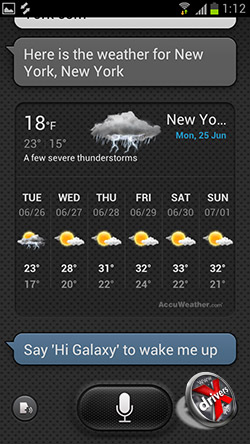
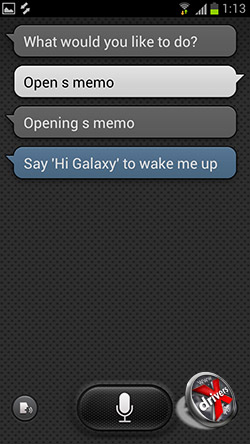
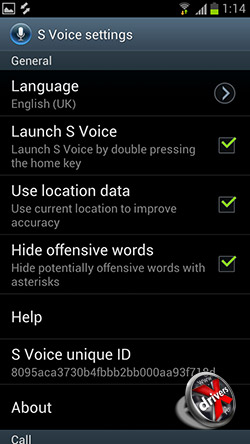
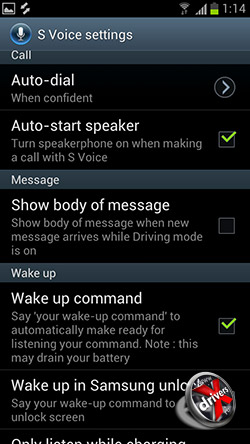
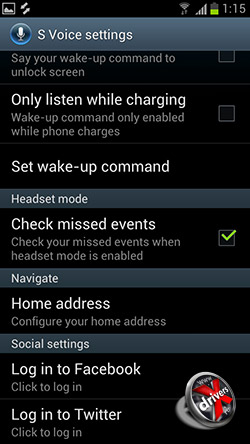
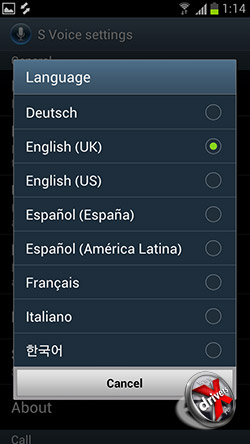
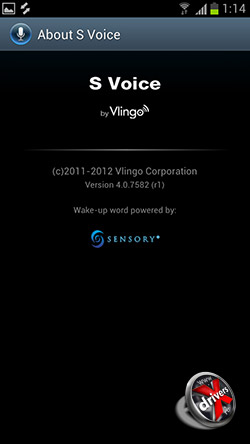
The S Voice application ("Voice conversation" in Russian firmware) is presented as an analogue of Apple Siri. With its help, you can ask your smartphone questions, open other applications. An Internet connection is required to work. Currently, English, German, Spanish, French, Italian and Korean are supported. They promise to add Russian soon. We tried asking S Voice a couple of questions, but not all of them were answered correctly. Perhaps it's the accent and pronunciation. But even if everything works correctly, S Voice, like Siri, is still one of the entertainment tools.
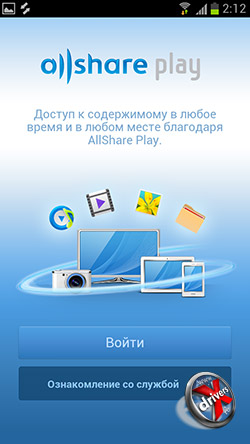
The previous AllShare application has been modernized and named AllShare Play. Now it allows you not only to play audio and video on various compatible devices via Wi-Fi, but also store data in the Sugar Sync cloud. After registration, 5 GB of space becomes available to the owner of the smartphone. At the same time, it is not very convenient to work with AllShare Play - the program does not behave very stable.

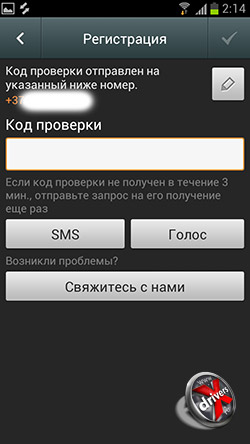
The universal messenger Chat-On migrated to the Galaxy S III. Moreover, his company made it to the screensaver. But we still don't see much sense in it.

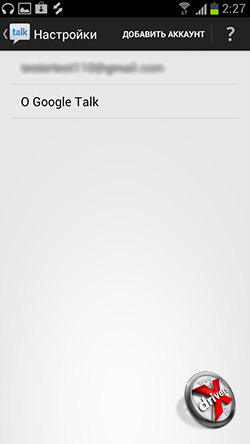
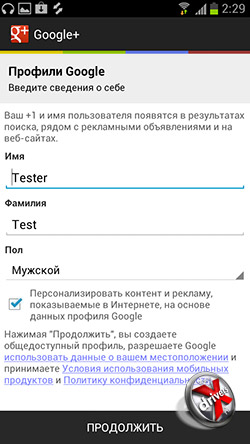
For communication, Google offers its own client, Google Talk, as well as Google+.


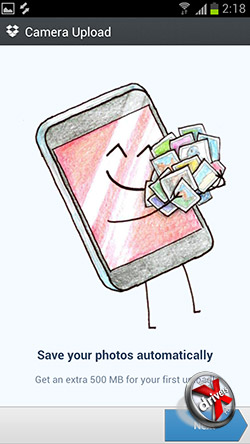
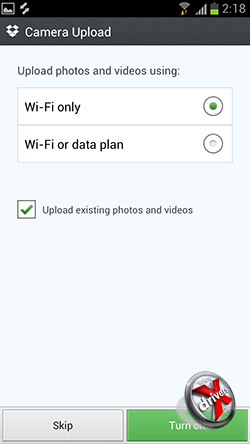

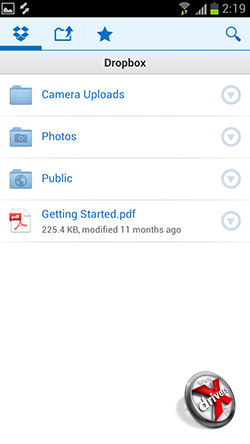
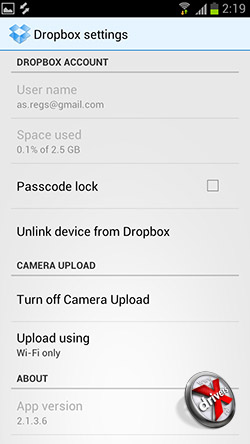
The Dropbox client is also preinstalled. Moreover, the owner of the Galaxy S III can get 50 GB of disk space there. The program will immediately offer to synchronize images from the camera.

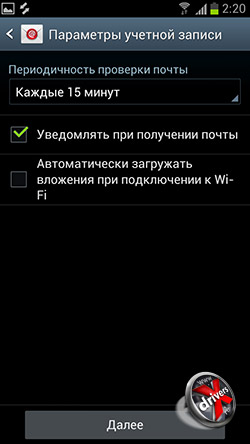
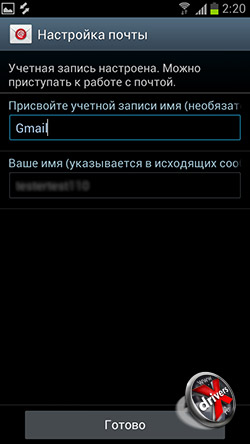
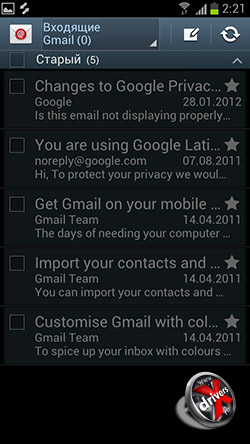

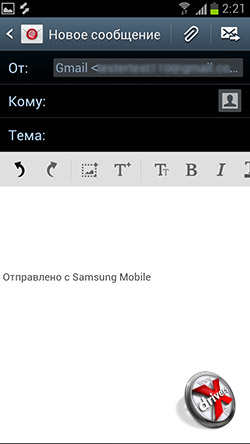
There are two mail clients. Standard from Samsung.
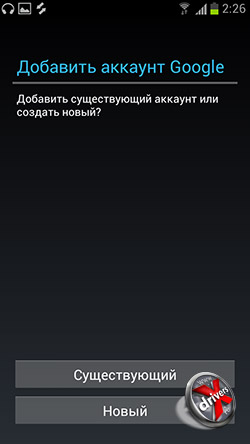
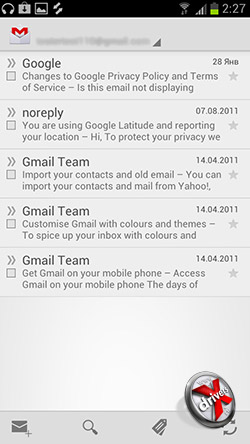

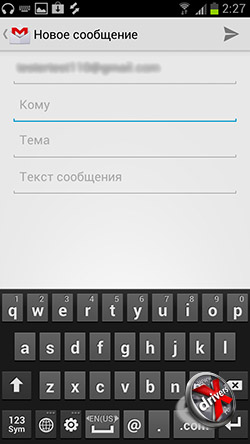
And the standard one from Google.


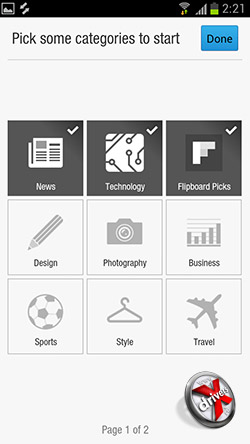
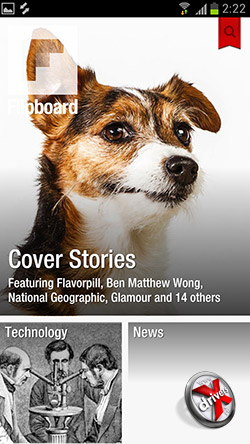

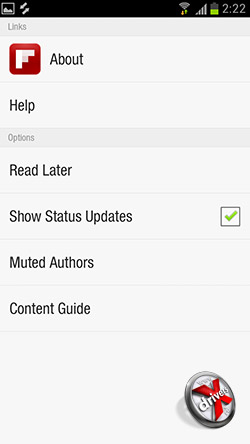

The Flipboard app lets you organize your news feeds. It is done very stylishly.
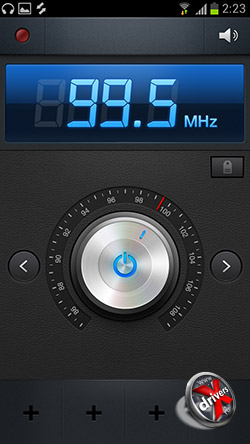
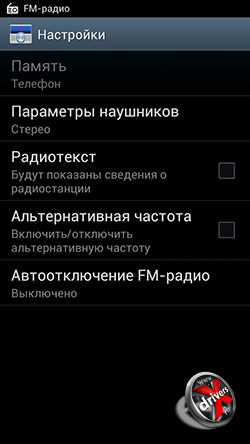


The radio and voice recorder have hardly changed.
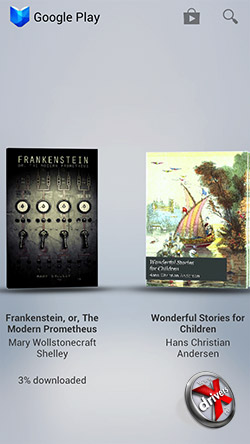

The Play Books app lets you buy and read books. This is exactly the essence of the recent rebranding. Android Market- now it has not only applications, but also books and films.
![]()
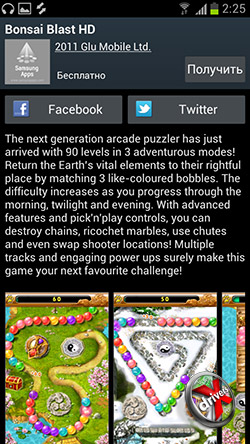
The system of "hubs" has also survived, through which one or another content can be purchased: music, games.
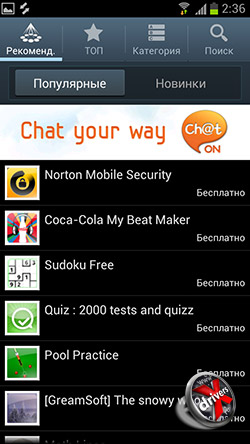
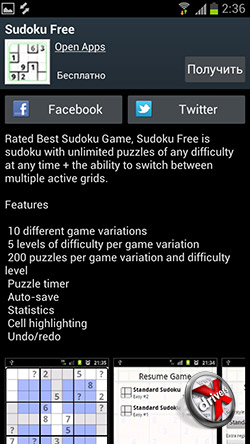
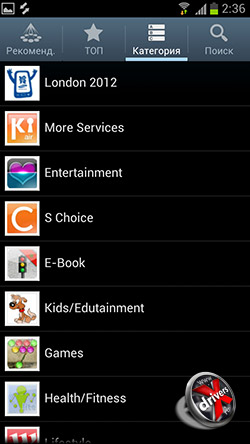
The store has not gone anywhere either Samsung apps Apps.
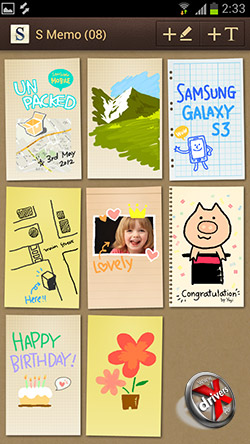
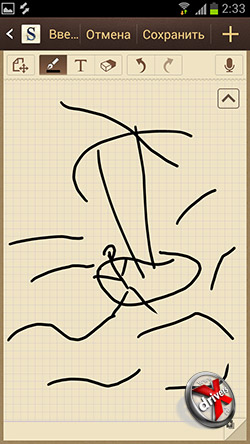
The S Memo note-taking app still allows you to write notes in both text and hand-drawn graphics. With your finger, or with a branded stylus pen.


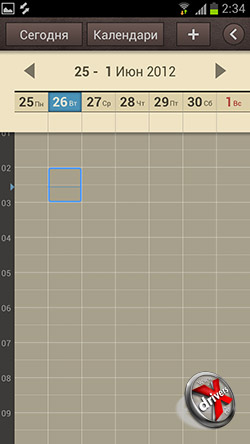
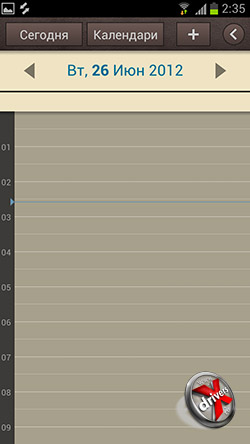
The calendar looks very nice. Viewing the year, month, week and day is made clearly and conveniently. In addition, its settings are replete with preset accounts for various programs.
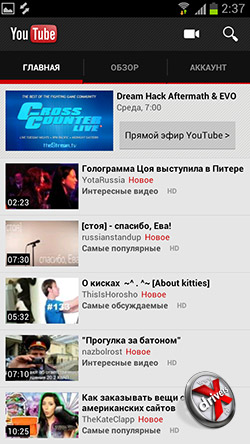
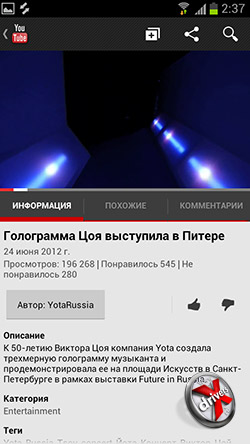
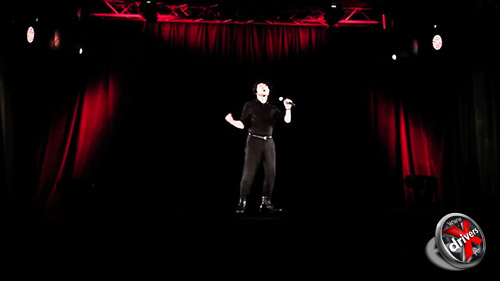

The application for watching YouTube videos is still convenient and standard.
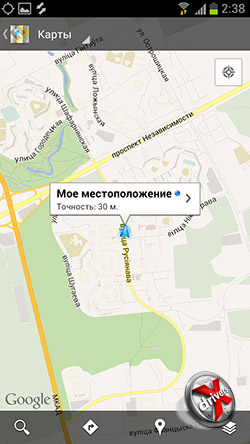
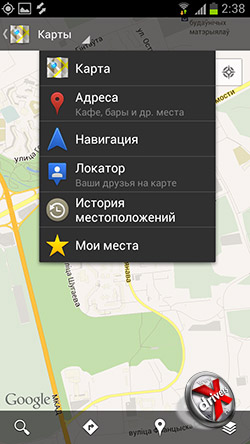
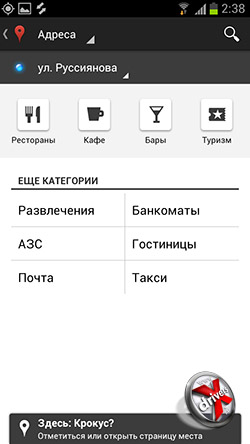
The mapping service is provided by Google Maps. Its main advantage is provided by the screen diagonal - it is a pleasure to work with maps on such a display.

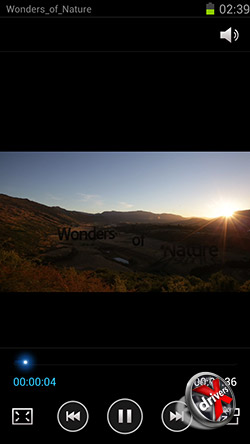
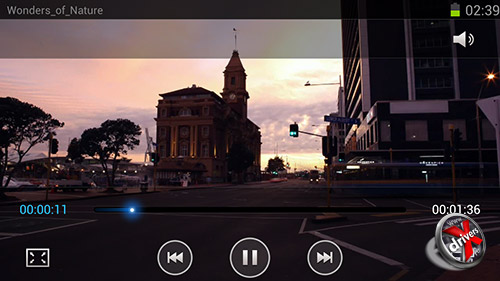
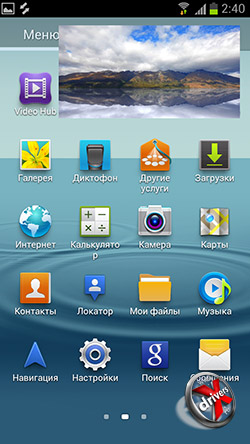
The video player plays almost any video out of the box. Moreover, it allows you to do this in a window floating on top of all applications. Associations with the desktop immediately arise.
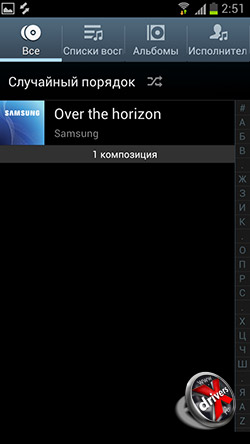

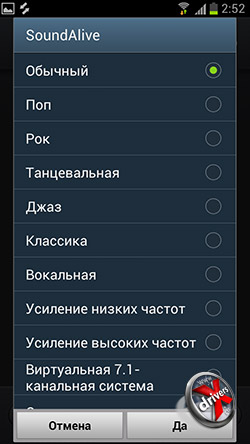
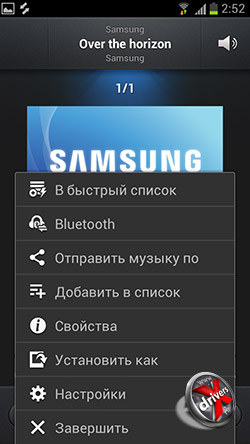

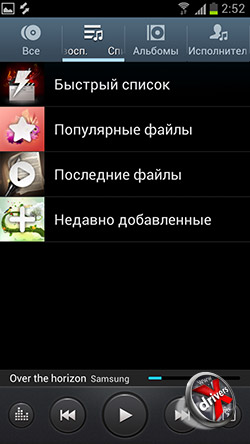
It looks like a smartphone Samsung Galaxy SIII destined to become the best device of this class performed by the South Korean company, and possibly the flagship of the smartphone market, at least for a while. Of course, everyone is waiting for the release of the 5th iPhone generations and the results of attempts by Nokia and Microsoft with Windows Phone 8. But, as long as Apple exists, there will be a dispute about the best smartphone in the world. We will take a closer look at the Samsung Galaxy SIII, especially since there is something to look at. Yes, and Samsung, oh, how good it is to promote a new product, clearly hinting at high hopes to hit a big jackpot.
Design
So, the advertisement says that the Samsung Galaxy S3 sees, hears and understands you. Yes, the Korean guys exaggerate a little, but picking up the phone, one cannot fail to note the pleasant-to-touch plastic and a huge 4.8-inch screen. By the way, the phone feels somehow easy in the hand, which for some users will seem like a sign of a cheap device. However, the same can be said about the S2.
The new model has more rounded shapes, which may seem unattractive to some. An interesting fact - HTC One X is 3 grams lighter than Samsung Galaxy S3, but it is the latter that feels lighter in the hand, which once again proves the influence of the selected body materials on tactile and weight sensations. All physical buttons on the case are very well located. The back panel is easily removable, which means that the issue of spare batteries and expanding the disk drive up to 128 GB is almost a reality.
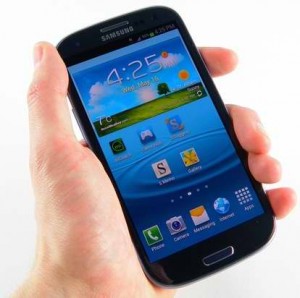
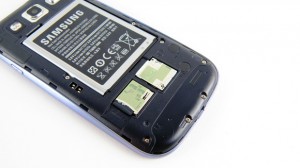
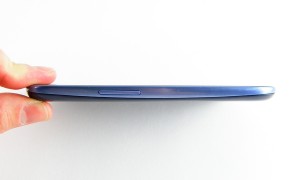
Screen
Well, there is only one word that can convey the whole gamut of feelings when looking at Galaxy screen S3 - GREAT! With a 309ppi pixel density and 4.8 "screen size, the S3 beats the iPhone 4S with its 3.5" screen. Given the competition from the HTC One X, the great Steve Jobs' company needs to think hard about how to improve the screen performance on the iPhone 5.
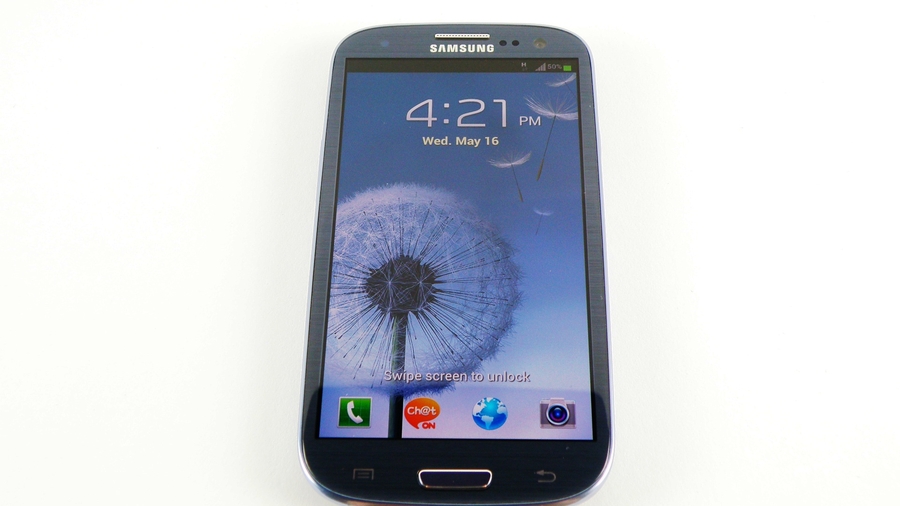
The screen is quite well adapted to direct sunlight. Normal brightness is enough to see what is happening on the screen, and by increasing the brightness, you can easily see the details of the photo.
The Super AMOLED screen is different from the previous model. In order not to tire with unnecessary technical details, let's turn to a simpler explanation. The Super AMOLED technology on the S2 assumed there were three so-called auxiliary pixels for each pixel: green, blue, and red. In S3, due to the high resolution, we had to reduce the number of auxiliary pixels, but the difference can be seen only with a significant increase. This step negatively affected the sharpness of the image, but again, with such a high screen resolution, the difference is almost impossible to catch.
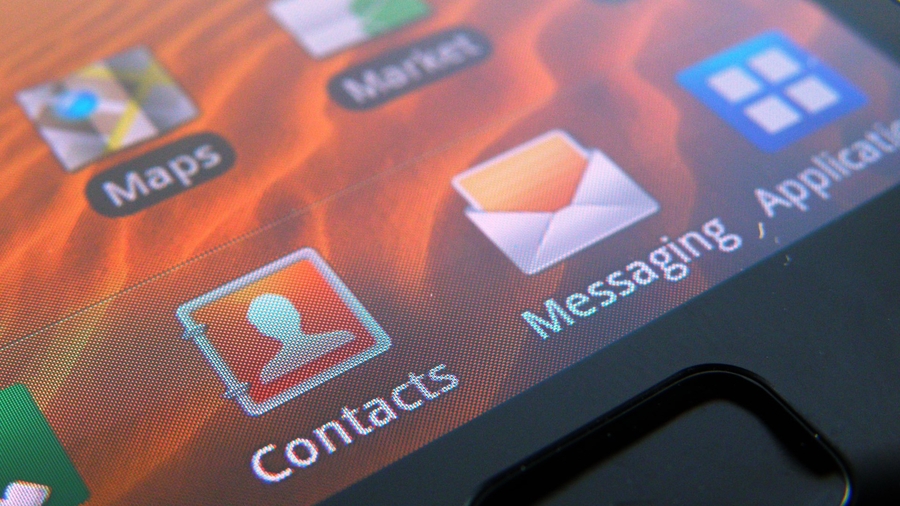
Interface
Samsung is seriously tackling the aerial nature theme with water, dandelions and nature sounds. Looks and feels great! There are also innovations. For example, when you unlock the screen, there are no visual cues other than ripples in the water where your finger touches the screen. Also, it became possible to launch applications from the "locked" screen.
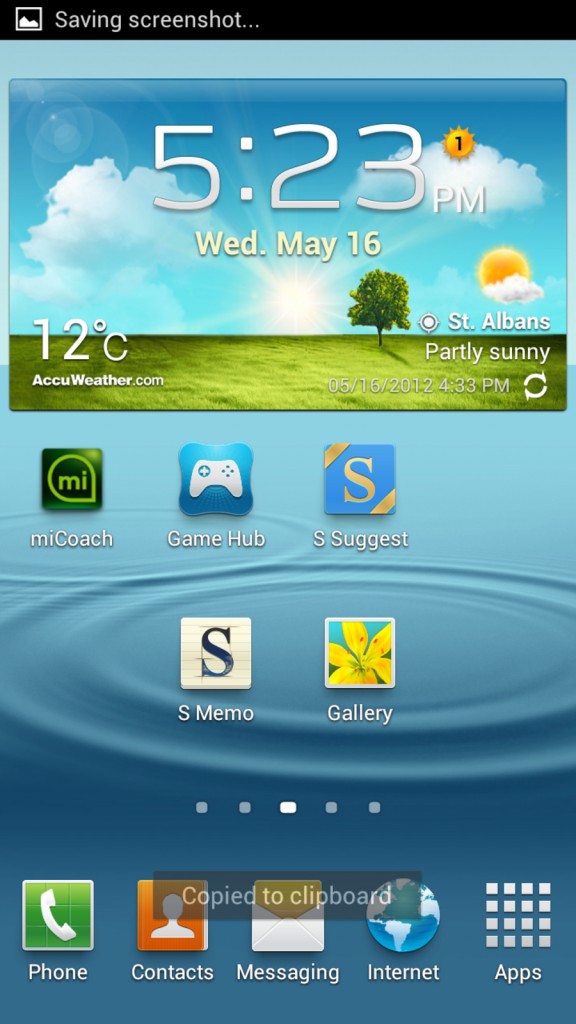
The time to return to working mode from sleep was traditionally not surprising. The S2 had the same problem, so Samsung engineers have something to strive for.
The large screen solved the problem of the excessive number of applications and widgets. Of course, it all depends on the user, but "by default" the screen does not look "cluttered". The bottom line of icons has expanded to 5, which means that calls, messages, browser, mail and applications can now be quickly accessed. Needless to say, under a 4-core 1.4 GHz Exynos CPU everything literally flies, and it seems that applications open faster than a finger touches the screen.
Internet
Of course, potential buyers see the Galaxy S3 not only as a “dialer”. In general, it is probably stupid to assume that a smartphone with a 4-core processor, HD screen and a gorgeous graphics accelerator will not be able to set a new standard for mobile web browsing. And the Galaxy S3 sets it. No complaints about browser operation and page display. No problem with Flash videos.
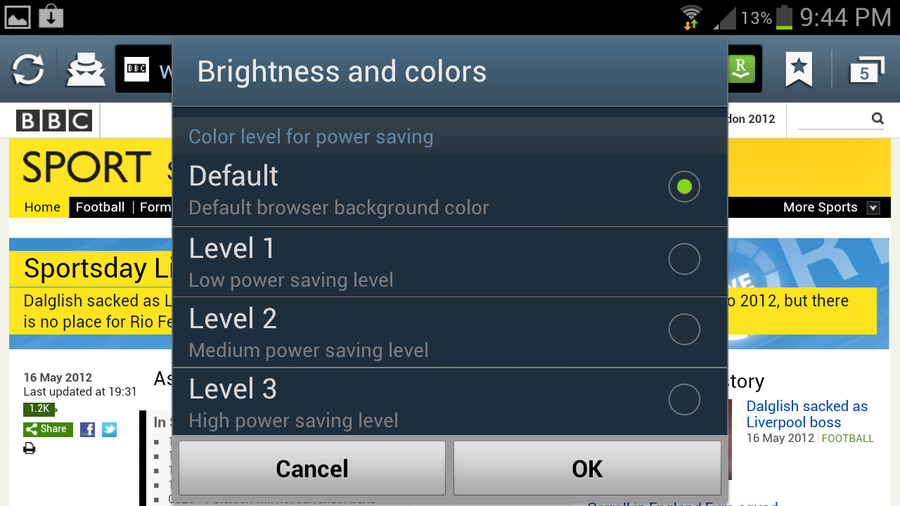
Ice Cream Sandwich offers Chrome browser, which means all the delights of syncing bookmarks, passwords and history are available on the Galaxy S3. From other joys - saving pages for offline viewing, from minor chagrin - the impossibility of separately adjusting the brightness of the browser (such a feature was in S2).
Camera
8 megapixels, myriad automatic modes, amazing speed of photo applications, good opportunities editing photos, adjusting exposure, contrast, white balance, ISO - this is what awaits Galaxy S3 users.
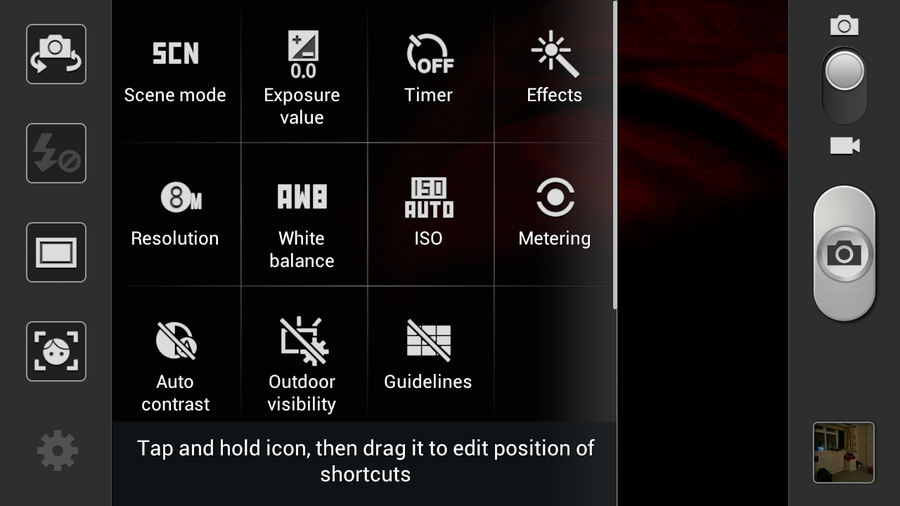
And plus to everything - the function of detecting faces in the photo. Yes, you can take pictures and tag people on them, however, “uploading” a photo with tags to Facebook will not work. It should be noted that in 20% of cases the camera refused to detect faces (maybe the smiles on the faces were not wide enough?).


The front camera boasts 1.9 megapixels and 720p video recording. You can take pretty decent self-portraits without excessive graininess. In general, we are with two hands on the cameras on the Galaxy S3.
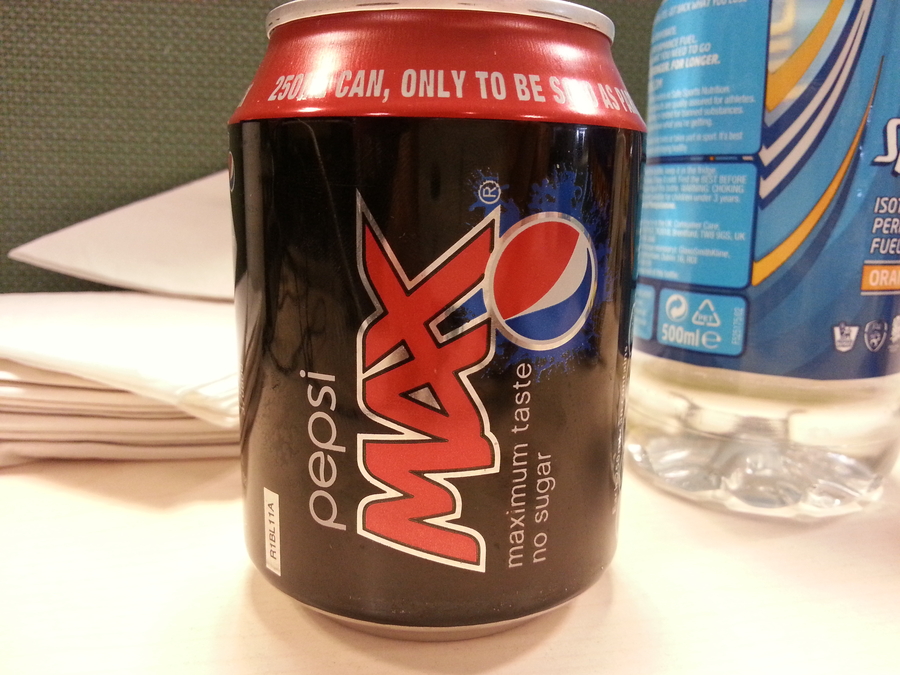

Shot in low light conditions
Video
By default, video is recorded at 1920 x 1080, which is sufficient for home video format. Additional functions a few, including white balance adjustment and image stabilization (in case the director's hands are shaking unnecessarily). The last trick works great, even if you are dancing with your phone in hand. But there is no slow motion mode. Zoom and autofocus are traditionally present. What else do you need for short YouTube videos?
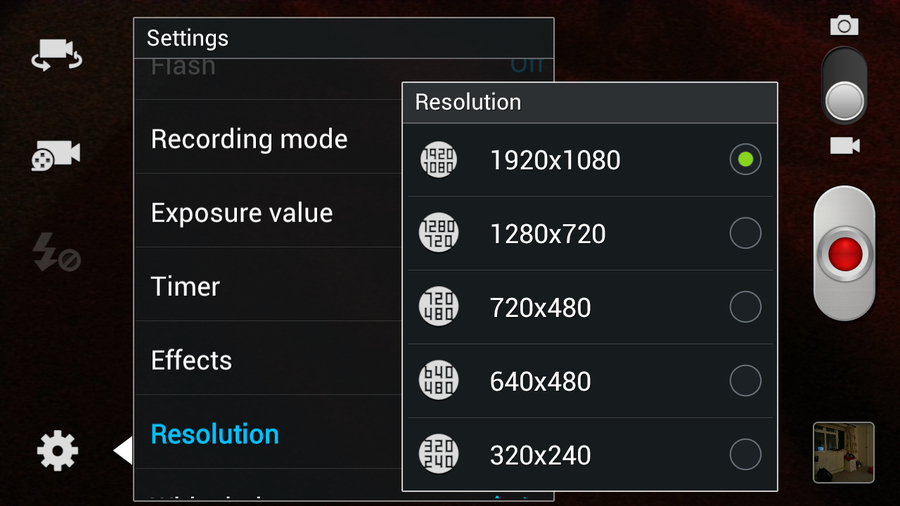
Let's just say you won't make an Oscar-winning film, but Samsung cameras The Galaxy S III is good enough to keep your home video collection up to date at a decent quality.
Fun & Games
What are most users looking for in smartphones? Entertainment, of course. The Galaxy S III is a true media center in this sense. As soon as you connect the headphones to your phone, you will see a list of applications for which the headphones may be needed, for example, a music player, FM radio or YouTube. How do you like this feature?
But this is all a trifle. The main thing is sound. And it is good for the Galaxy S III. Even quite good. Forget about EQs where rock sounds like jazz. With the Galaxy S III, you can really feel the difference. And the 7.1 surround sound feature can also come in handy. Perhaps 7.1 is superfluous, since the human ear is not so sensitive (5.1 would be enough for the eyes).

There are some pretty cool features, for example, Music Square, an app that selects music according to your mood. A good morning and a good night are now the concern of the Galaxy S III, which, as mentioned earlier, is designed to understand its owner.
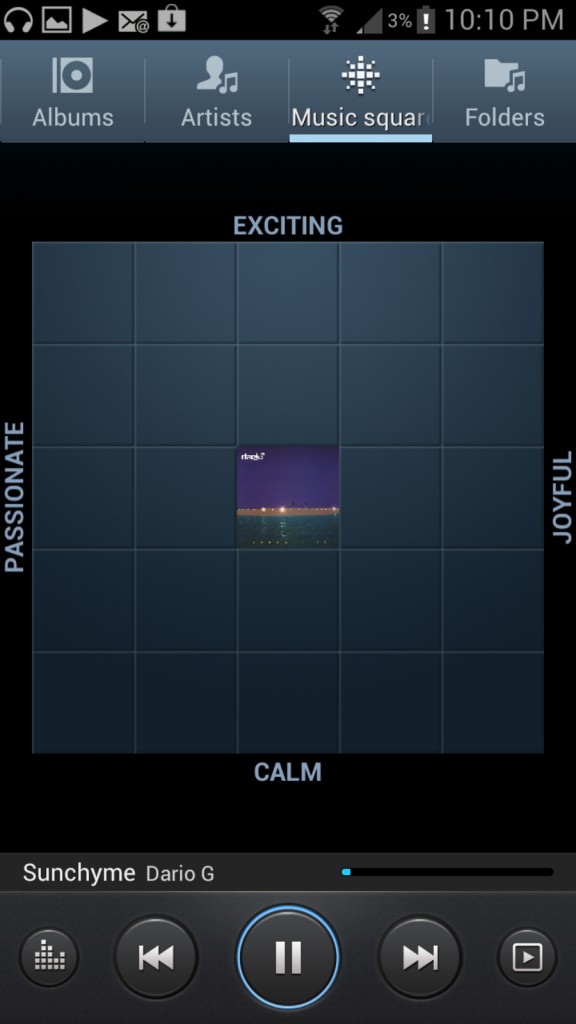
Using the DLNA function, you can enjoy music from other devices, although there are some complaints about DLNA. In general, the media Galaxy capabilities S III on top.
When it comes to gaming, gamers can expect great performance from a smartphone thanks to the Mali-400MP GPU and the Nvidia Tegra 3 chip. Grand theft Auto 3 or Dead Space won't disappoint you. In general, it is difficult to imagine a toy that the S III will not cope with.
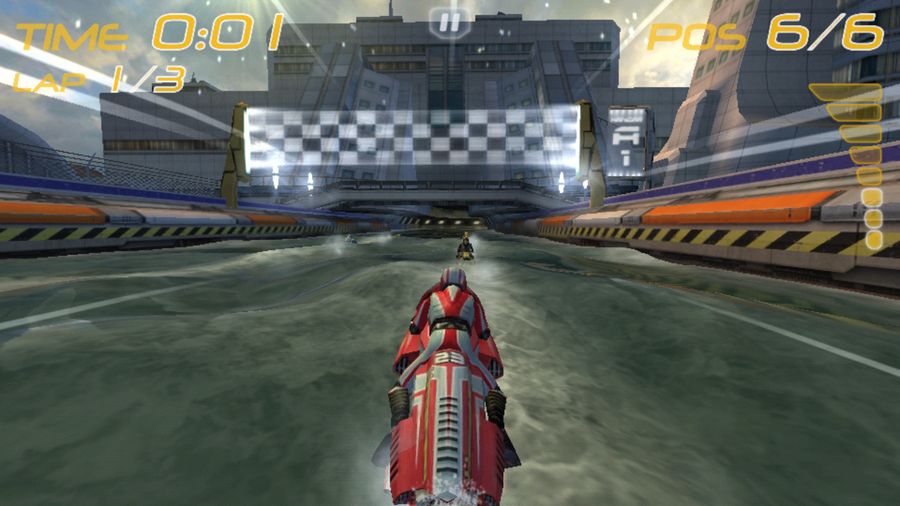
Battery and wireless connections
Huge screen wireless technologies, powerful processor... Yes, this beast should just destroy the battery. But no. 90 minutes of work (watching a video, included Wi-Fi and all kinds of notifications (Gmail, Twitter, Facebook) and 100% screen brightness) - and the battery "lost weight" by only 18% ... This is the best result among smartphones in this class. The second place is taken by the Galaxy S II, and the bronze is from the iPhone 4S. The battery with a capacity of 2100mAh does an excellent job with the role assigned to it.
NFC technologies, Wi-Fi, Micro USB connection (it is possible to connect to external screens via MHL), GPS with GLONASS technology, DLNA (for connecting to other devices), Bluetooth 4.0 - what more could you want? The connection to the computer is done using the Kies application. The disadvantage is that you can't just drag the file icons from your computer to your phone, but instead you have to click and select "Transfer File".
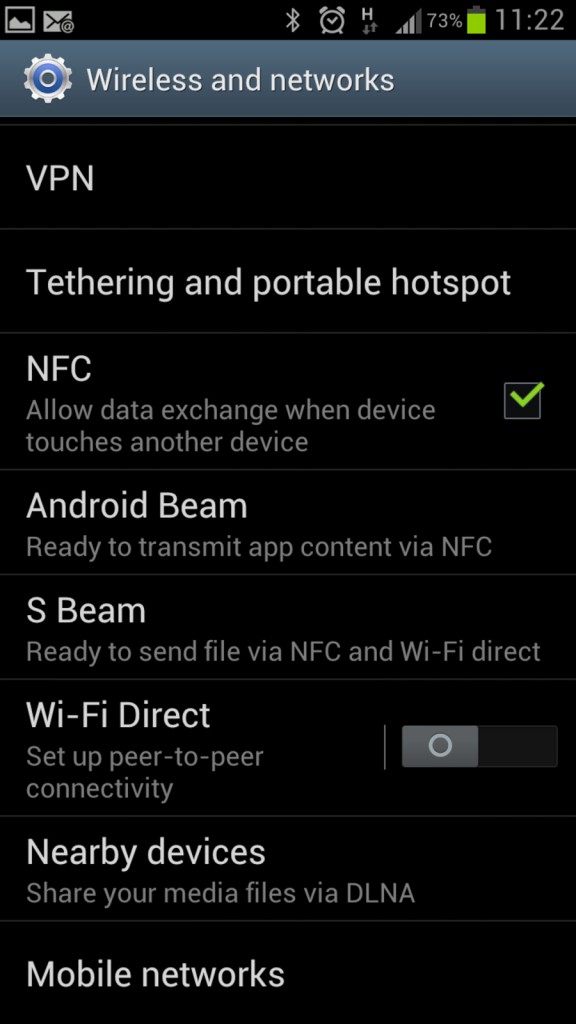
Verdict
If you have been waiting for the release of this smartphone for a long time, there is nothing to think about, since you will not be disappointed! Fresh design, very fast interface, overclocked by not weak hardware and so on. True, if you already have a Galaxy S II, then you are unlikely to be delighted with its older brother.
Each year, Samsung traditionally holds one or more events called Samsung Unpacked, at which key innovations for the company in the segment are announced. mobile phones... Usually, within a couple of months before these events, the audience is systematically warmed up with "accidental" leaks and non-random teasers. However, this year, before the presentation of the Galaxy S III, the Koreans managed to create a real excitement for the first time: for almost half a year, the Internet was filled with the most incredible rumors about the new device, and the piquant vests of the gadget world discussed the yet unannounced novelty with such enthusiasm, as if Samsung were going to present new iPhone... A significant role in this was played by the fact that last year's flagship - Galaxy S II - was so good that everyone wanted to look at its successor.
However, the more long-awaited the device, the stronger the disappointment after its announcement. Like the iPhone 4S, the Galaxy S III was immediately dubbed a "disappointment": they say, its design is not the same, and the body materials are not the same, and the camera is not the same ... Let's try together to separate the grains from the chaff and objectively deal with the merits and disadvantages of the new flagship of the line of Android smartphones Samsung.
- Samsung Galaxy SIII with own eyes: Galaxy Nexus on marketing steroids
- New benchmark: comparison of cameras in smartphones Apple iPhone 4S, HTC One X and Samsung Galaxy S III
Specifications Samsung Galaxy S III
- Ranges: GPRS / GSM / EDGE 850/900/1800/1900, UMTS / HSPA 850/900/1900/2100.
- Form Factor: keyboardless candy bar.
- Operating system: Google Android 4.0.4 with TouchWiz UX interface.
- Display: 4.8 inches, Super AMOLED HD, 1280x720 pixels (pixel density 306 ppi), 16 million colors, touch (capacitive matrix).
- Camera: 8 MP, autofocus, geotagging, video recording (1920x1080 / 30p), LED backlight.
- CPU: Samsung Exynos 4212, four cores ARM Cortex A9, clocked at 1.4 GHz; integrated video accelerator Mali 400MP.
- RAM: 1 GB.
- Flash memory: 16, 32 or 64 GB + microSDHC cards.
- Multimedia capabilities: MP3 player, FM receiver, video player (support for MPEG-4, Divx, Xvid, H.264), video editor, integration with YouTube, Find Music service (analogue of Track ID in Sony phones Ericsson).
- Wireless technologies: Wi-Fi a / b / g / n with Wi-Fi Direct and Mobile Hotspot support, Bluetooth 4.0, NFC.
- Specific absorption rate of electromagnetic energy (SAR): 0.21 W / kg.
- Battery: lithium-ion, replaceable, capacity 2100 mAh (7.8 Wh).
- Interface connector: microUSB, 3.5 mm headphone output.
- GPS: yes, support for A-GPS, support for Google Maps.
- Dimensions and weight: 137x71x9 mm, 133 grams.
Samsung Galaxy S III video review
Appearance and design features
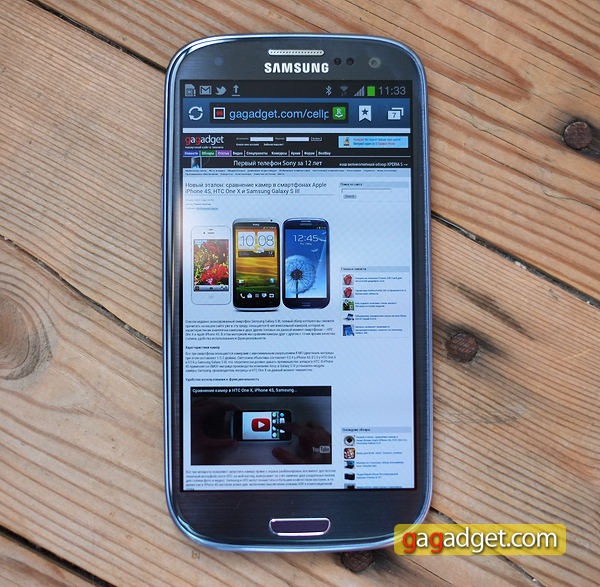
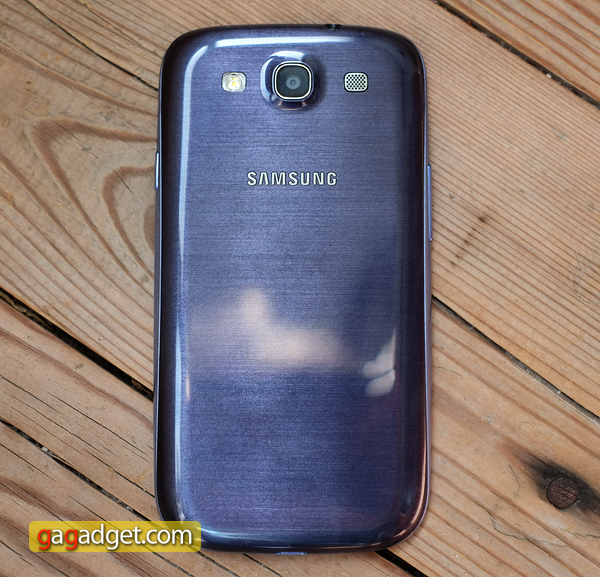

Frankly speaking: on promo photos appearance I didn't like the Galaxy S III too much. Some kind of indistinct rounded shapes, glossy plastic ... in general, three times fu. However, the phone looks much better live than in photos and renders: its shape almost completely repeats the Galaxy Nexus (including a slight bend protective glass on the front) and the plastic is of very good quality. In the gray-blue version of the device, a “striped” texture imitating a scratched metal is hidden under the upper transparent layer. The white phone is made of the most ordinary white plastic without any visual effects... In general, I understand the desire of a certain part of buyers to have an "iron phone", but, given the rather big Galaxy dimensions S III, we can confidently assert that the use of metal would significantly increase the weight of the apparatus. By the way, about the size. If the Galaxy S III had been introduced a couple of years ago, it would have been deemed obscenely large. However, the average screen size of a smartphone is growing every year, so today a 4.8-inch display seems completely normal and causes less rejection than a 3.5-inch one. Due to the minimal thickness of the bezel around the screen, the dimensions of the smartphone can be called "reasonable" - unlike the Galaxy Note, the SGS III fits easily into a jeans pocket.
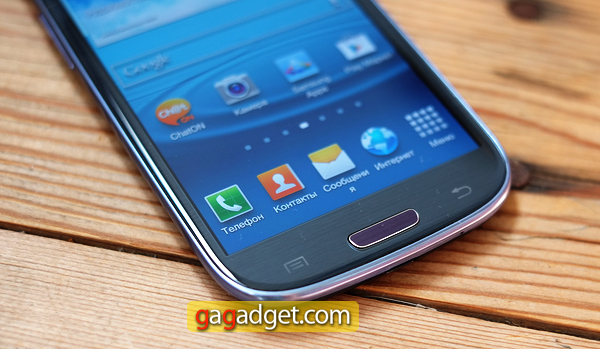

The controls of the Galaxy S III are exactly the same as those of the Galaxy S II. Under the screen is a mechanical Home key, as well as touch buttons "Menu" and "Back" (their disadvantages include a very dim backlight). On the left side there is a volume rocker, on the right - a lock button.
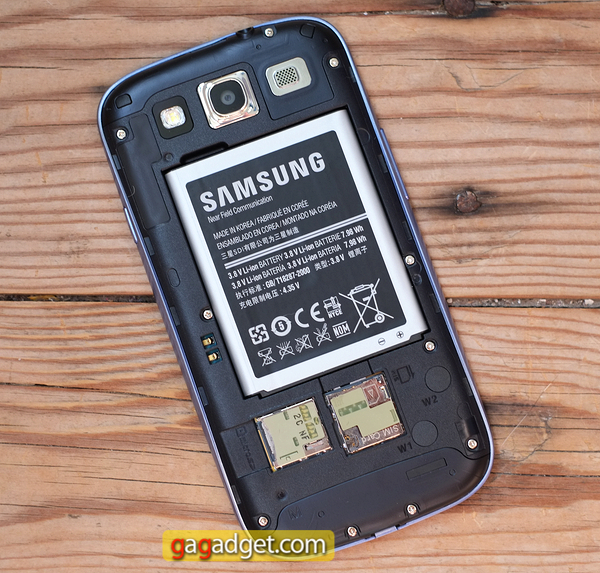
There are no surprises under the cover: a battery with a pleasant capacity of 2100 mAh, a SIM card slot and a memory card slot. It should be noted that if in SGS II it was impossible to hot swap memory cards, then in SGS III this drawback was eliminated.
Screen
The screen in Galaxy S III is made using Super AMOLED technology and has a diagonal of 4.8 inches with a resolution of 1280x720 pixels. Subpixels are arranged according to the PenTile scheme, but with such a pixel density (306 ppi), the main drawback of such screens is poor rendering small print- invisible. Unfortunately, all the other disadvantages of SAMOLED screens have a place to be. I will list them briefly:
- overestimated minimum brightness;
- overestimated contrast and "flashy", too saturated colors;
- dependence of color rendering on screen brightness and white balance;
- Thin parallel lines and dark spots visible against light gray and dark gray backgrounds;
- relatively coarse gradients.
None of these shortcomings are critical, since they are visible only if you look closely. However, I should note that the main competitor of the Galaxy S III, HTC One X, is equipped with a screen more High Quality... If you are interested in learning more about the features of AMOLED screens, I recommend reading my Galaxy S II review.
Sound
I hasten to inform you that the Galaxy S III has overtaken its predecessor in terms of headphone output quality. When using high-quality headphones (preferably reinforcing ones), you can and should enjoy listening to music on this device, although it still falls short of the iPhone 4S. As for the call loudspeaker, in my opinion, nothing has changed: it is still not too loud and is still very easily drowned out by a cloth when the phone is in a jeans pocket. Use vibrating alert, it helps you not to miss calls.
Software and interface
Samsung Galaxy S III running operating system Android 4.0.4, on top of which the proprietary TouchWiz UX shell is installed. Unlike TouchWiz 4, used in SGS II and SGN, the interface here is closer to the "native" Android 4. There is no permanent dock with icons of the most frequently used applications in SGS III, which, in my opinion, is a drawback. But the preservation of many ICS "chips" (in particular, the interface for switching between applications and dividing the main menu into applications and widgets) can be called a plus. At the same time, Samsung has added a lot of its own useful widgets and additions to the phone, for example, all sorts of buttons and switches in the drop-down status bar in TouchWiz UX are much more convenient than in bare ICS. The SGS III's music player and FM receiver with broadcast recording capabilities are still some of the most convenient on the market. The built-in browser deserves a separate discussion. According to the old, but not at all good "Samsung" tradition, it is equipped with its own screen brightness control, which is also hidden in the second level menu (!). Calling such a solution ergonomic simply does not turn my tongue. As a result, during testing, I installed Dolphin on my smartphone and used only it.
SGS III has migrated many applications that debuted on the Galaxy Note, in particular, S Planner and S Memo... The phone also has its own analogue Siri from iOS 5: in the English interface it is called S Voice, in Russian - "Voice conversation" (obviously, to distinguish it from conversations using sign language). But if Siri understands my "mixture of English and Nizhny Novgorod" without any problems, then S Voice is bad with this, so our conversations most of all resembled a conversation between a mute and a deaf. Perhaps if Samsung had opted for sign language after all, it would have been better.
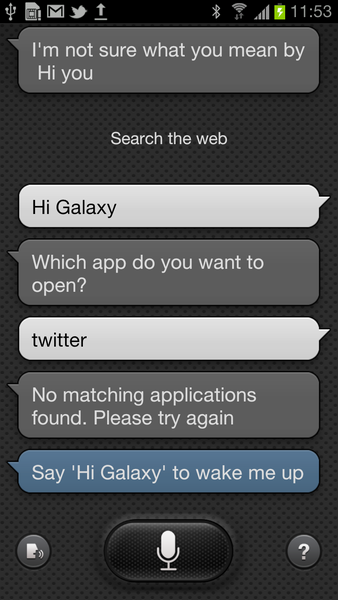
The phone has an interesting feature called Pop up play... It allows you to launch a video file for playback in a separate small window and place it anywhere on the screen. It looks great and arouses admiration at first, but in practice, again, it is not entirely clear in what situations this feature can be really useful.
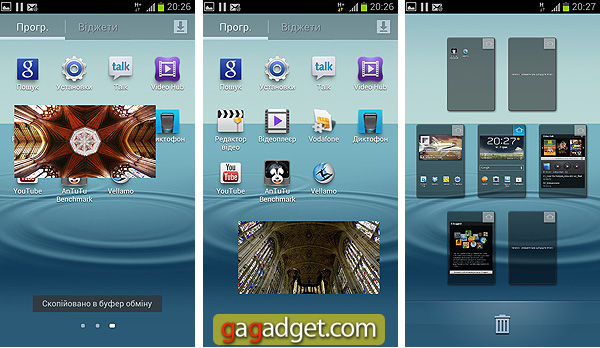
Pay attention to the Pop Up Play widget
It is worth mentioning this interesting function, how SmartStay... When activated, the Galaxy S III begins to follow the user's gaze with the front camera and, if the user is looking somewhere in the wrong direction, turns off the screen backlight. In my sample phone, this function worked through a stump-deck, but in any case it can be called an innovation of dubious utility. Another proprietary feature of the Galaxy S III is called S Beam... It is a technology that allows you to quickly exchange files between compatible phones. Files are transferred via Wi-Fi Direct, but the initial pairing of phones occurs via NFC. Of course, phones from other manufacturers do not support S Beam. By the way, taking this opportunity, I want to ask Samsung a question: gentlemen, when will you add Russian / Ukrainian T9 when dialing a number? In general, it should be a shame, after all, 2012 is outside.
Performance, autonomy, heating
As befits a top-end smartphone from 2012, the Galaxy S III is equipped with a 4-core processor. Samsung abandoned Tegra 3 (and did the right thing, in my opinion) and chose its own Exynos 4212 chipset, built on the basis of ARM Cortex-A9 cores with a clock speed of 1.4 GHz and a Mali 400MP graphics accelerator. The volume of the device's RAM is 1 GB.
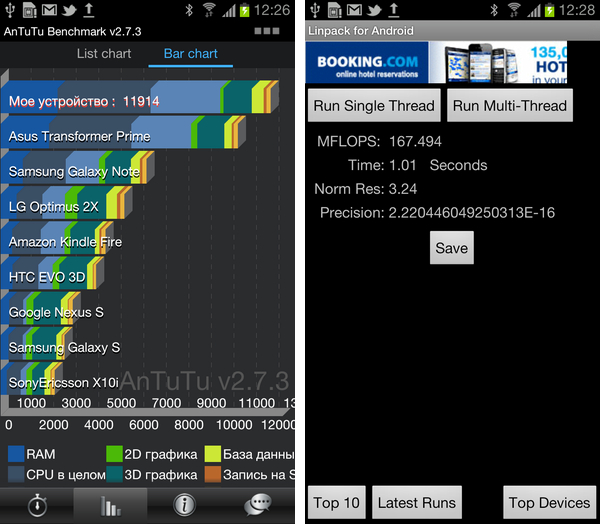
Needless to say, the Galaxy S III just flies around with a whistle and shows excellent performance in both benchmarks and real life. Even scrolling text in the very problematic official Twitter client does not slow down at all. Apparently, there is still benefit from four eggs of the nuclei. At the same time, unlike the Galaxy S II, the device barely gets warm. If the SGS II individual games (in particular, the popular Robo Defense) simply glowed red hot, then the third "galaxy" remains a little warm. The back cover only gets noticeably warm when the battery is being charged. Finally, I must say that the new flagship differs from the previous one by a noticeably increased time. autonomous work... Who is to blame for this - a more capacious battery, a new processor or Android 4.0 - I don't care, but the result is pleasant. Galaxy S III confidently survives until the evening, and if it is not tormented with special frenzy, then you can count on two days of work.
Camera
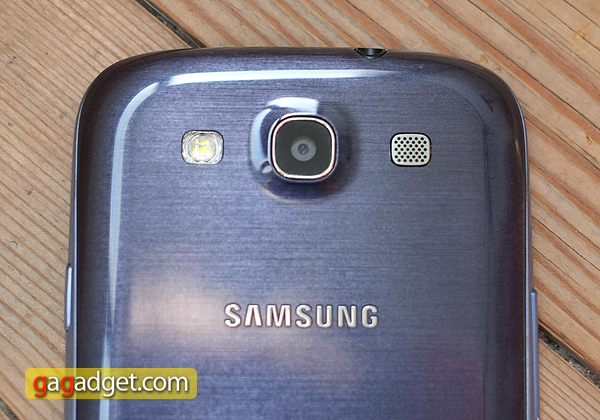
The SGS III is equipped with an 8-megapixel autofocus camera with LED illumination and video recording in Full resolution HD. The diagonal of the matrix is 1 / 3.2 inches, the matrix is made using BSI technology (back illumination). The lens aperture is f / 2.6. The main innovations compared to the SGS II are the burst mode (3.5 fps, maximum 20 frames per burst) and the HDR mode. In addition to photographs, the Samsung Galaxy S III can also shoot videos with continuous autofocus. The maximum resolution is 1920 x 1080 pixels with a refresh rate of 30 fps and stereo sound (the AAC codec with a bit rate of 134 Kbps is used for the audio track). The camera interface in SGS III is almost unchanged from SGS II. However, you can judge it yourself from the following screenshots:
Sample photos and videos
Samsung Galaxy S III
In the dry residue
Personally, I have no doubt about the fact that the Galaxy S III is doomed to become a hit. Already, pre-orders for the device worldwide have exceeded 9 million units, so it is likely to not only repeat the success of the Galaxy S II, but also surpass it. And this, in my opinion, will be completely true, because the Galaxy S III is exceptionally good. It offers the user all the best on the market: the best performance, the best camera, excellent screen and good battery life. The TouchWiz shell in its current incarnation has almost completely got rid of childhood illnesses (except for the absence of Russian T9 when dialing a number), so you can safely use the device "out of the box". The disadvantages of the Galaxy S III can be attributed only to the case, which does not quite correspond to the status of the flagship and the estimated price of $ 900 for the 16 GB version. In general, in my opinion, the main Galaxy competitors The S III will be its own "stall neighbors" - the Galaxy Nexus and the aforementioned Galaxy Note. Both have weaker hardware, but at the same time offer comparable equipment, and their cost at the moment is much lower than the cost of SGS III, and will decrease in the future. 5 reasons to buy the Samsung Galaxy S III:
- large screen with HD-resolution;
- high-quality camera (perhaps the best among 8-megapixel camera phones);
- excellent performance;
- long battery life;
- memory card slot (not available on many competing models).
2 reasons not to buy a Samsung Galaxy S III:
- the design of the case does not correspond to the status of the apparatus;
- absence of Russian T9 when dialing a number.
It did not come as a surprise. Its announcement was preceded by a large number of leaks, and the public was heated to the limit. For the most part, expectations were justified - we were shown a productive Google Phone with impressive characteristics, but, unfortunately, enclosed in a not very attractive case. The hype turned out to be so strong that, as a result, many people took the shown device coolly. Moreover, if the owners of the iPhone 4S and Android-flagships from other manufacturers (by that time, HTC One X was widely available at retail, Sony Xperia S) he did not inspire for obvious reasons, but the reaction of users of Galaxy S 2, Galaxy Note and Galaxy Nexus was unexpected. Although, if you look at the Galaxy S 3 from all sides, then everything falls into place.
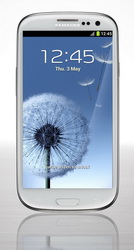
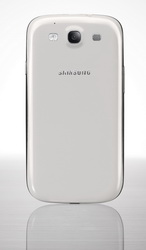
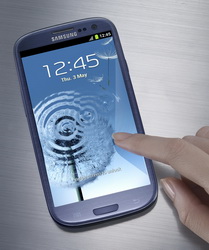
Technical Samsung specifications Galaxy S 3 (I9300):
- Network: GSM / GPRS / EDGE (850/900/1800/1900 MHz), WCDMA / HSPA + 21 Mbps (850/900/1900/2100 MHz)
- Platform (at the time of announcement): Android 4.0.4 (Ice Cream Sandwich), TouchWiz Nature UX
- Display: touchscreen, capacitive, 4.8 ", 1280 x 720 pixels, HD Super AMOLED, 306 ppi, PenTile, multitouch 10 clicks
- Camera: 8 MP, autofocus, flash, video recording [email protected], BIS, Zero Shutter Lag
- Front camera: 1.9 MP, video recording [email protected], BIS, Zero Shutter Lag
- Processor: Quad-core, 1.4 GHz, ARM Cortex-A9, Exynos 4 Quad (Exynos 4412)
- Graphics chip: Mali-400 MP
- RAM: 1 GB
- ROM: 16 GB, 32 GB, 64 GB
- Memory card: microSD (up to 64 GB)
- A-GPS and GLONASS
- Wi-Fi (802.11a / b / g / n), WiFi HT40
- Bluetooth 4.0 LE
- 3.5mm audio jack
- micro-SIM
- Accelerometer, light sensor, distance sensor, digital compass, gyroscope, pressure sensor
- Audio: MP3, AMR-NB / WB, AAC, WMA, OGG, FLAC, AC-3, apt-X
- Video: MPEG4, H.264, H.263, DivX, DivX3.11, VC-1, VP8, WMV7 / 8, Sorenson Spark
- Battery: 2100mAh
- Dimensions: 136.6 x 70.6 x 8.6mm
- Weight: 133g
- Form factor: candy bar with touchscreen
- Type: Smartphone
- Announce date: May 3, 2012
- Release date: May 2012 (June in Russia)
Design, construction and equipment
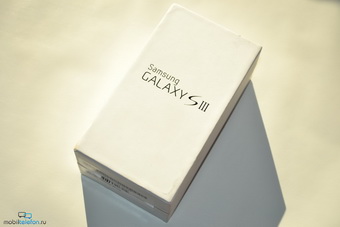
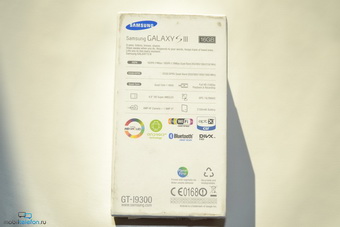
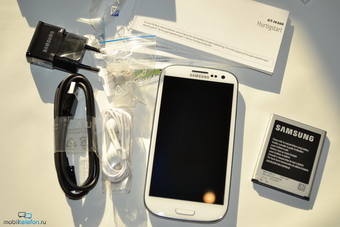
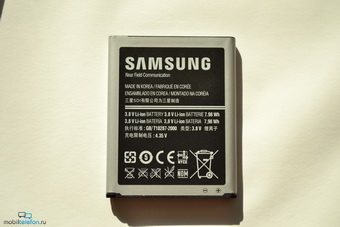
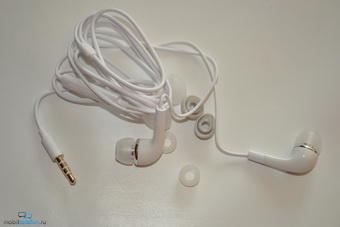
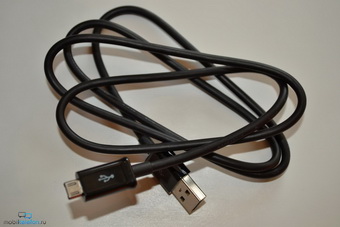
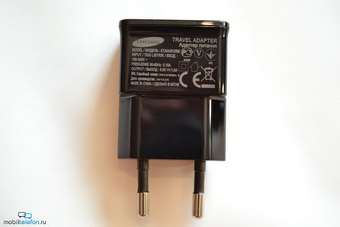
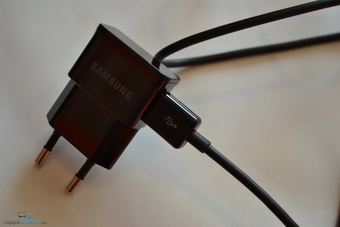
Galaxy S 3 available in two colors - white and dark blue. We tested a white version for sale in one of the European countries. However, its equipment does not differ from the Russian one: unit charger(1000 mA output), USB cable, wired headset, 2100 mAh battery, documentation. I won’t be surprised if I say that I didn’t like the design of the phone at first: a flat device in a glossy plastic case, the place for which is in budget solutions, and not in a top-end gadget. But live, I must admit, the phone does not cause rejection and to some extent even attractive. Of course, it is difficult to call it stylish, looking at the same Xperia S with a transparent insert with backlight, but there is some kind of zest in the Galaxy S 3. In addition, thanks to the rounded corners and small thickness (8.6 mm), the novelty fits perfectly in the hand - a shovel, but comfortable.
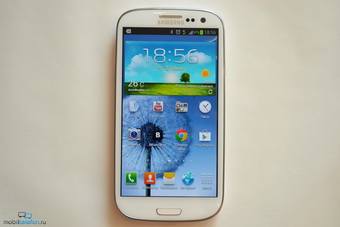
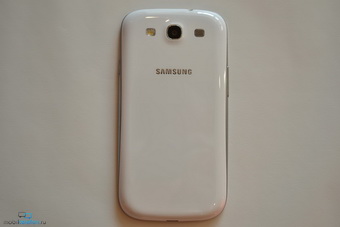
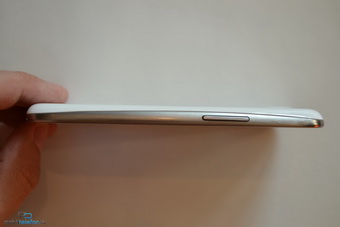
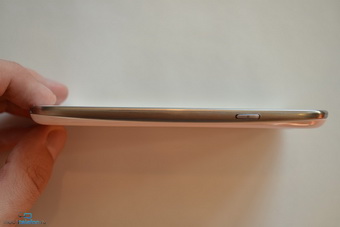
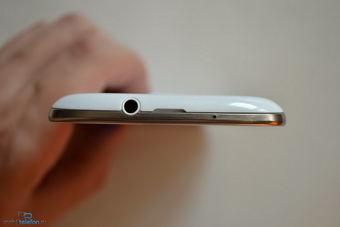
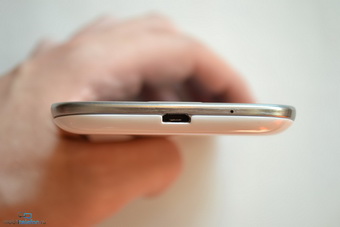
On the front of the device there is an LED, light and distance sensors, a 1.9 megapixel camera, an earpiece, and a company logo. To the right and left of the central "home" key (it is physical) are the touch "back" and "menu". Almost the entire front side is occupied by a 4.8 "display with a resolution of 1280 x 720 pixels. The usable area given for it is larger than that of the notorious Xperia S, therefore the phones are close in height, but working with the Galaxy S 3 is more convenient (although often you have to use both hands, but this is true for all devices with a large diagonal.) On the back there is a logo, a speaker, an 8-megapixel camera with a powerful LED flash and autofocus. blocking, on the top - a 3.5 mm jack and an additional microphone, on the bottom - a microUSB port and a main microphone.
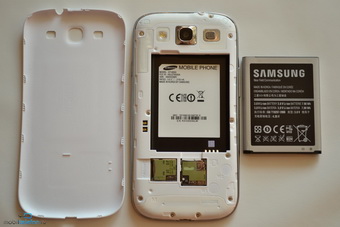
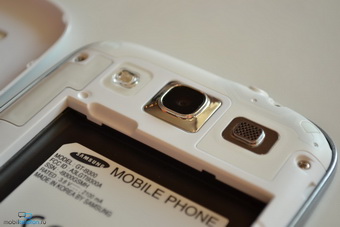
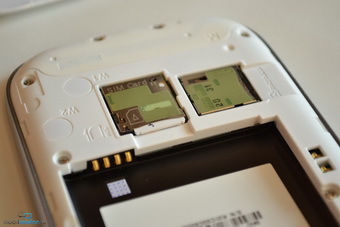
If we look under the cover (a thin piece of plastic that closes with terrible clicks), we will see a powerful battery with an integrated NFC chip, a slot for a micro-SIM and a slot for a microSD memory card.
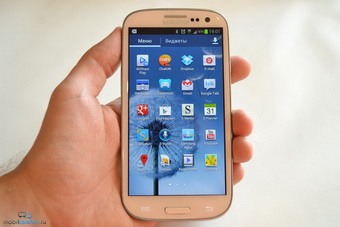
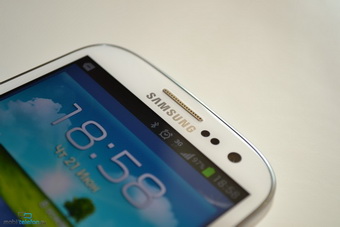
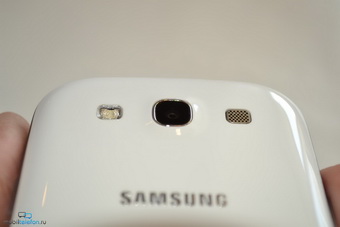

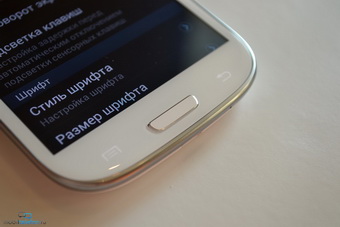
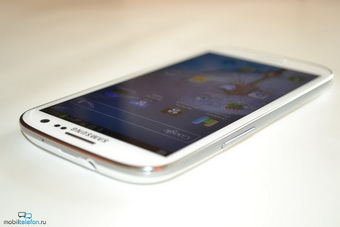
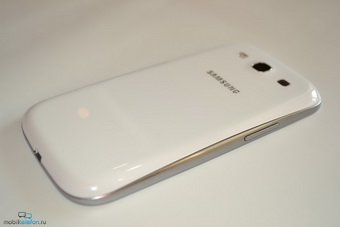
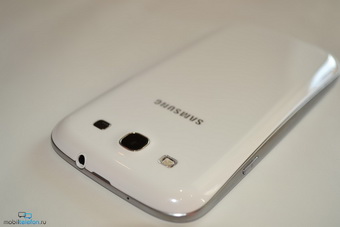
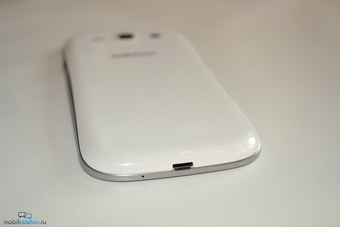
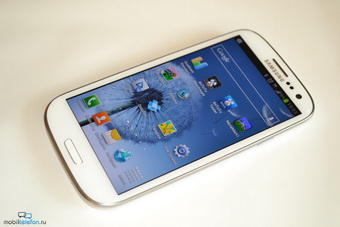
The location of the central key close to the bottom is justified from the point of view that it excludes accidental presses on the screen - I did not find any inconveniences in working with it. Touch buttons have a pleasant illumination, which is especially effective in the white model (I touched the blue one in the store and it did not impress me). There is no dedicated camera button on the body, but the virtual key on the lock screen can easily cope with the role of a quick launch of the camera. The plastic is of high quality and, like any gloss, will scratch if you do not take measures to protect the case (aka a cover). At the same time, I can't say that a soft-touch would be the best option, as it clings to, and the phone can lose its presentable appearance quite quickly (for example, Xperia S). Glass and metal (well, and ceramics) would be more appropriate on a flagship for 30 thousand rubles, but, alas, Samsung is not poking around in this direction yet. Assembly at Samsung Galaxy S 3 at a height - you will not find any creaks or backlashes even over time.
Software
It would be strange if the Galaxy S 3 was based on the old Android version so the unit sports 4.0.4 Ice Cream Sandwich. Officially, nothing has been said about updating to 4.1 Jelly Bean yet, but it's a matter of time. The interface is played by a modified TouchWiz called Nature UX. The shell is made with an emphasis on the unity of man with nature - sounds, pictures, ringtones - everything is calm and attuning to a peaceful mood. Unfortunately, not everyone likes the murmur and flowers, so the company should have provided an option for a stricter interface. However, no one bothers to install third-party wallpapers or specify your music. Yes, and root can help if it's completely unbearable.
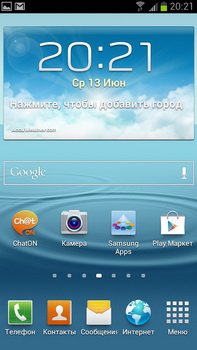
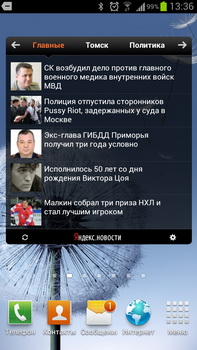
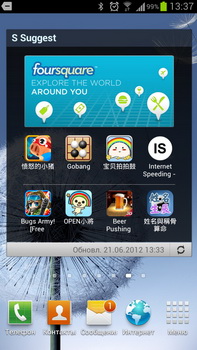
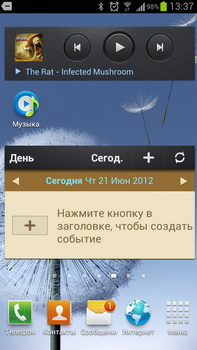


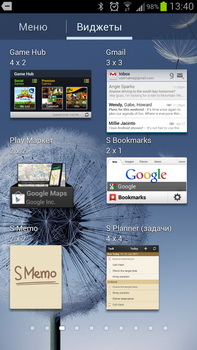
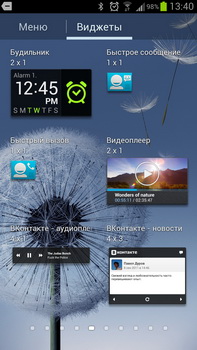
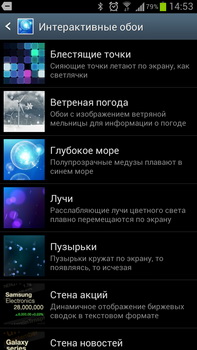
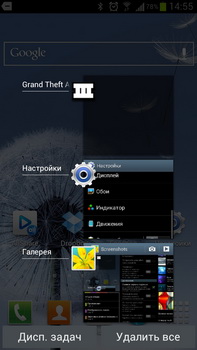

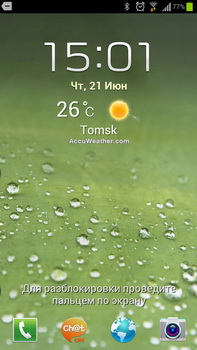

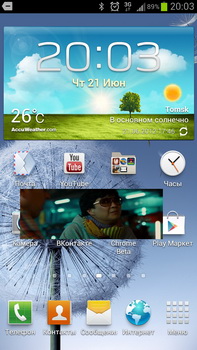
To accommodate widgets, of which there is a great variety for any tasks, applications and folders, up to seven desktops are allocated. The lock screen is very flexible - you can customize the display of weather, stocks, news, shortcuts to the most frequently used functions. On the notification screen, the player control keys appear, if it is active, various notifications. There are always quick access buttons for Wi-Fi, GPS, silent mode, auto-rotate screen off, power saving, mobile data, Bluetooth, driving mode and sync. When you hold down the home key, the last running applications, which immediately you can close everything, or go to the Task Manager, where you can pause certain programs.
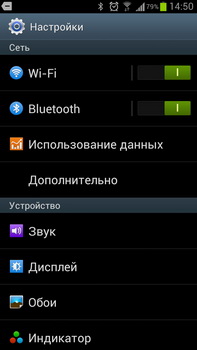
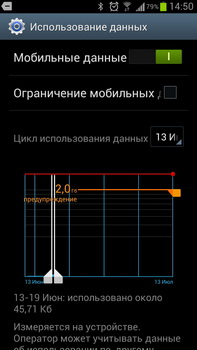
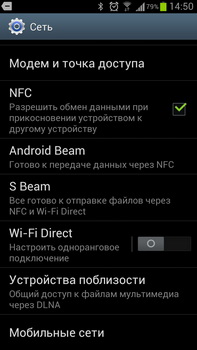
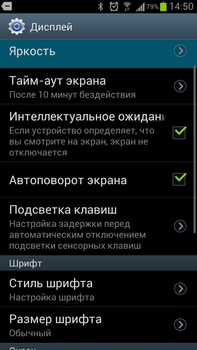

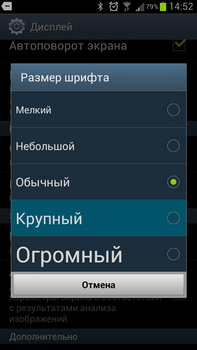
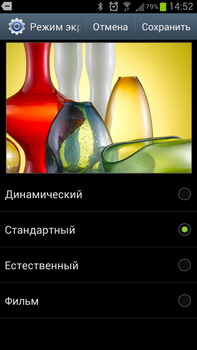

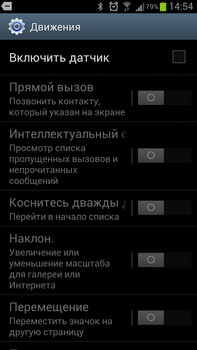
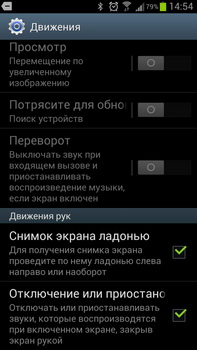

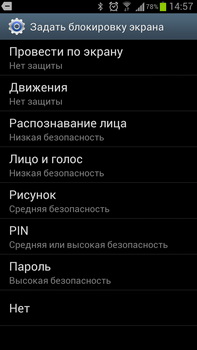
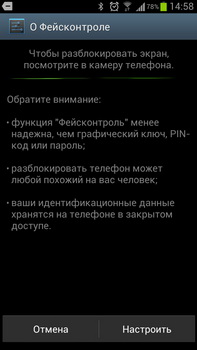

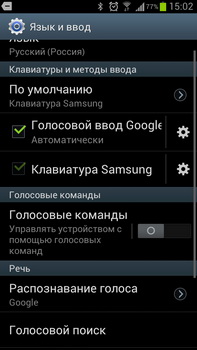
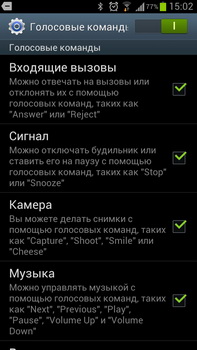
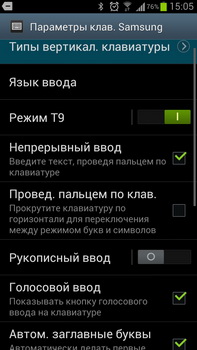
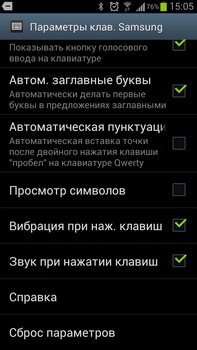


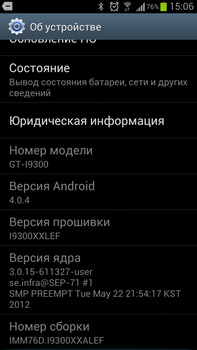
The settings should be explained in more detail. At the top there is placed Wi-Fi and Bluetooth, Data usage, where the user has the right to specify the volume threshold mobile internet traffic in order not to go over the tariff limit, Android Beam and S Beam using NFC technology are located in Extras. There is a smart standby mode in the screen settings - it detects that the user is looking at the screen and does not turn off the backlight. In principle, it works. Several types of fonts and sizes will definitely appeal to visually impaired users. HD Super AMOLED display can work on Galaxy S 3 in four modes - dynamic (too bright, just pluck out your eyes), standard (default), natural (close to the real gamut) and film (everything is gray and boring). A lot of smartphone functions are tied to the position sensor. I don’t like motion control, so I’ll honestly say that I haven’t tested them in practice. But I checked voice control- it works, but the conditions around should be close to ideal, that is, no extraneous noise. But even in this case, the device has to raise the voice, which looks ridiculous from the outside. Voice can take pictures, control the player, rearrange the alarm, answer calls. I liked it very much voice input text - the accuracy of the definition of Russian words is quite high, but the technology does not yet know how to put punctuation marks. Alternatively, enter text with Swipe gestures. Fast and convenient. But for some reason the words are not chosen those that are needed. The Xperia S has a slightly more intuitive technology. The phone works for a long time, but the Power saving item will additionally help to extend the time. There, processor performance, brightness are limited, the brightness level in applications changes, vibration is turned off. There are a lot of locking methods - by swiping across the screen, and by movement, and across the face (Face Control), and by voice, and a pattern, and a password, and even a PIN. At the same time, not all of them are safe, and face recognition is easy to deceive with a photograph - in Jelly Bean it will be more difficult to do this, since there will be a check for the "survivability" of the object.

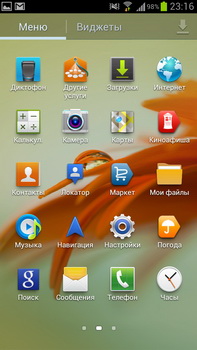
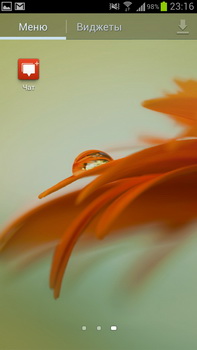
Let's go through the pre-installed applications.
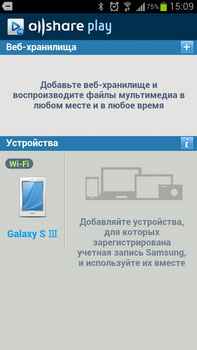
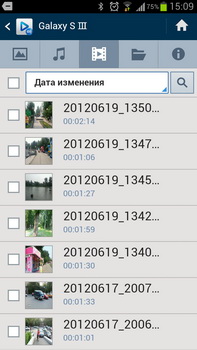
AllShare Play uses Wi-Fi to connect your smartphone with other electronic devices. The function makes it possible to broadcast and receive content over a wireless connection.

The Dropbox client, one of the best online storage, is present. I put a plus sign.
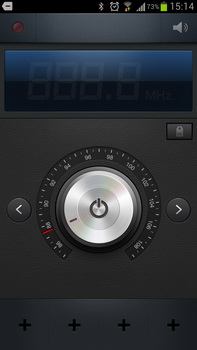
FM radio works with headphones. Something special cannot be noted.

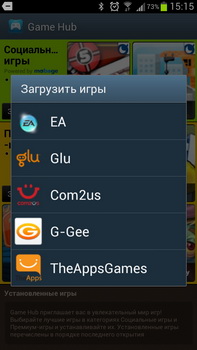
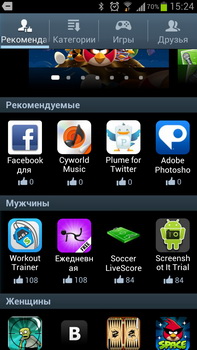

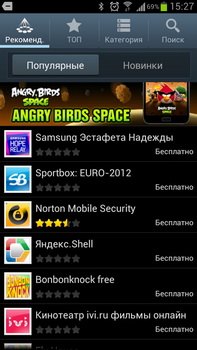
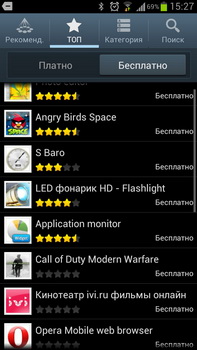
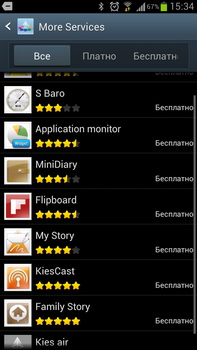
There are several services for downloading applications on the device - Game Hub, Play Market, S Suggest, Samsung Apps, Other Services. Four of them are branded from Samsung. This is not bad, but not good either. Why offer the user so many alternatives, the difference between which is practically no, is the same everywhere? Isn't it better to collect all programs in one convenient place, as is done in iOS?


The S Memo note-taking program came with the Galaxy Note. But if the “overgrown” is comfortable working with it with a stylus, then drawing and writing with a finger on a screen with a smaller diagonal is not the best idea. However, no one bothers to buy an electronic pen for the device - such an accessory is announced by the manufacturer. However, I would recommend opting for the Galaxy Note if you really want to create.
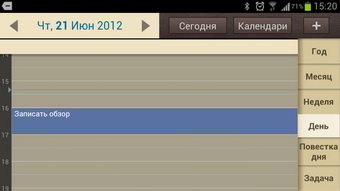
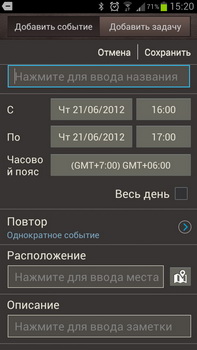
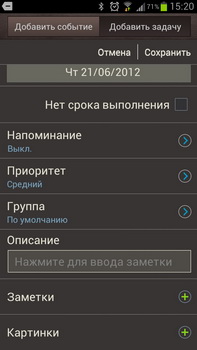
S Planner is an advanced version of the standard calendar with the Google Android task planner.
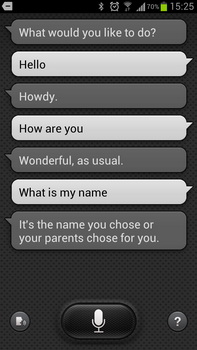
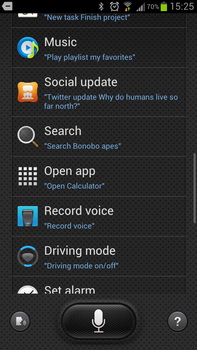
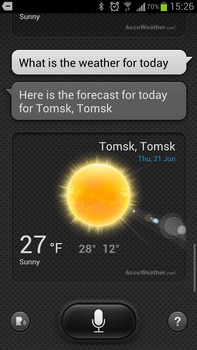
Apple Siri laurels haunt many, in particular Samsung. The S Voice electronic assistant works in a similar way - the user asks the device questions and gives instructions, and he follows them. The service does not yet understand Russian, so its usefulness tends to zero. However, even those who know English will probably get bored with it in half an hour. That Siri, that S Voice - pure indulgence with a short wow effect. Comparative video of both services:
![]()
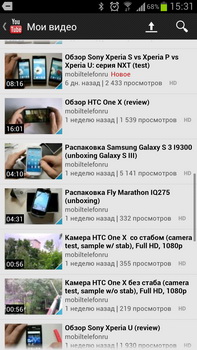

Android Ice Cream Sandwich has changed the YouTube client. The functionality remained the same, but outwardly it became prettier.
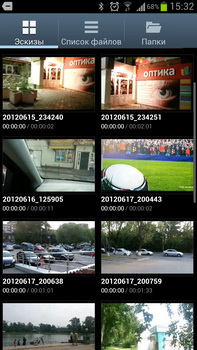
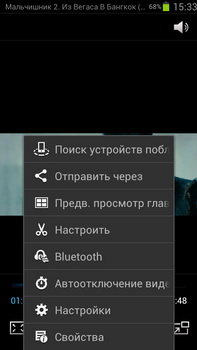
Galaxy S 3 is a powerful multimedia processor that grinds high-definition video in a variety of formats. The manufacturer claims support for Full HD and MPEG4, H.264, H.263, DivX, DivX3.11, VC-1, VP8, WMV7 / 8, Sorenson Spark. A rare file will ask for transcoding for playback with a standard player. I was impressed by the sketches of the videos, which help to understand what the file is about. The “picture in picture” function is also interesting - the small screen of the movie can be taken out of the video player to watch the movie by communicating via SMS.
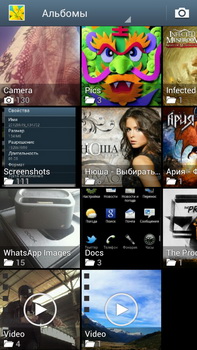
It is difficult to single out the features of the Gallery, but it is possible. If DLNA connection is active, then it will show photos and videos from other devices. It is also worth noting the function of detecting faces - you can let the phone automatically indicate friends, although it is better to do this manually.
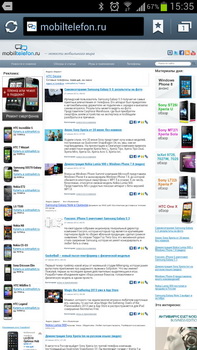
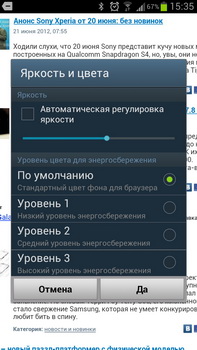
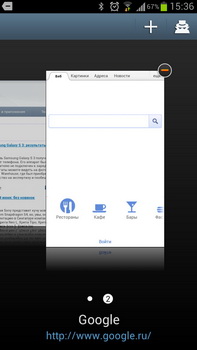

The standard browser is very fast. Flash is not supported out of the box, so if you want to watch banners, go to the Play Market. Curiously, the screen brightness can be set separately for the browser, regardless of the overall brightness. I believe that the days of branded browsers are numbered with the availability of Chrome for ICS, so it's better to install it from the Market and start getting used to it.


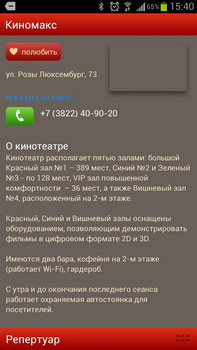

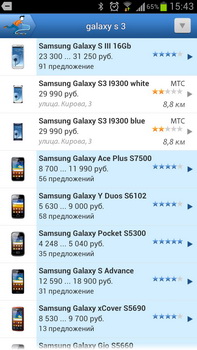
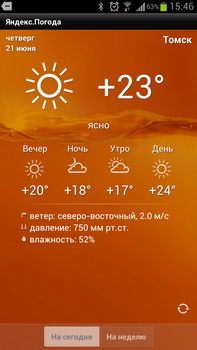
There are several services from Yandex - Kinoafisha (description of films, addresses of the nearest cinemas with sessions), Market (a convenient service for finding stores with any goods you are interested in), Weather.
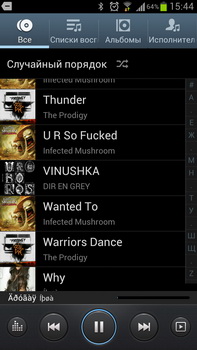
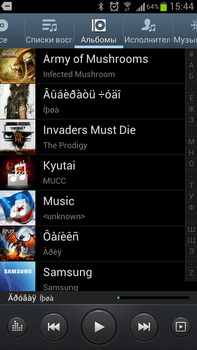
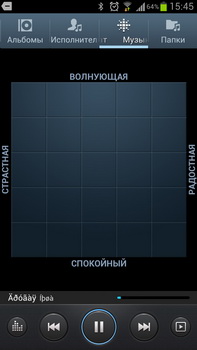

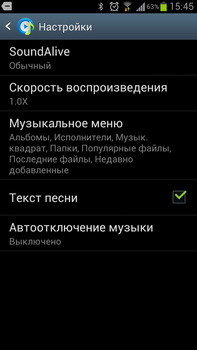


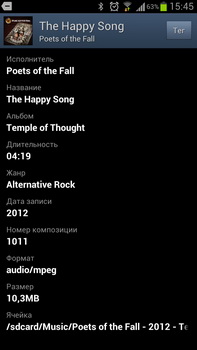
The music player did not attract sympathy - there are problems with encoding, the interface is inconvenient, in some cases it is impossible to go to the library without closing the application. The sound quality is good, there are a lot of equalizer presets, but there is still a lot to work on.

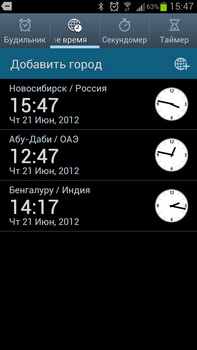

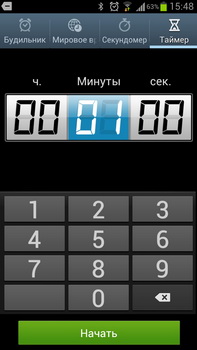
The Clock contains an alarm clock, timer, stopwatch, world time.
Camera
V Samsung Galaxy S 3 an 8-megapixel module with flash and autofocus is used. As befits a flagship, the number of different settings is great. There is a convenient touch focus, a zoom function while shooting a video, the ability to take 6-megapixel photos by shooting Full HD video, a high-speed shooting mode (20 frames at a time) with automatic selection best photo... Photo quality, for my taste, is about on par with the Xperia S, iPhone 4S and Nokia N8. Somewhere better, somewhere worse, but it is difficult to identify an unambiguous leader.
Galaxy S 3 - left, Xperia S - right:
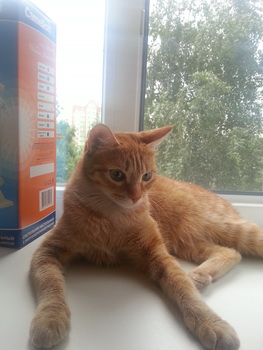
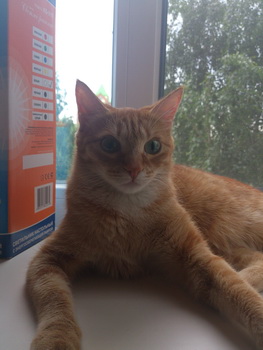


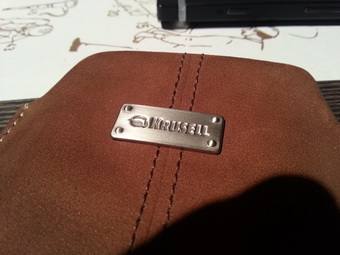
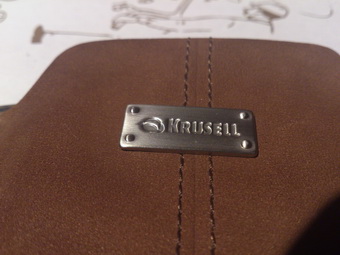
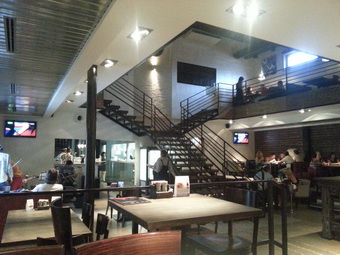
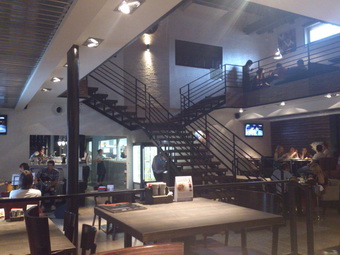



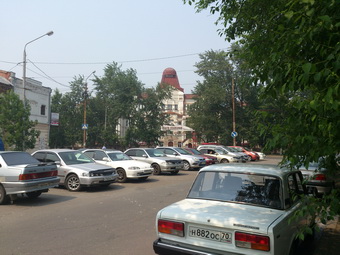
Galaxy S 3 - left, iPhone 4S - right:


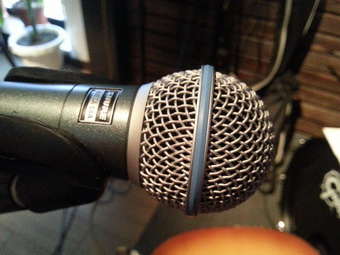
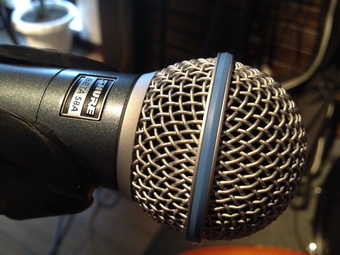
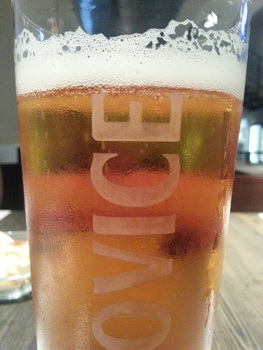
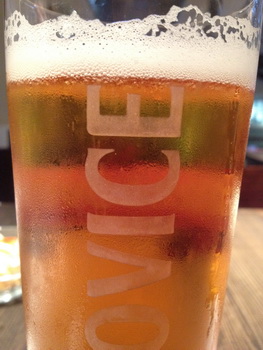

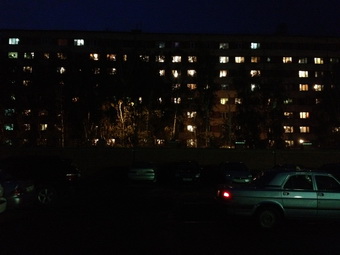
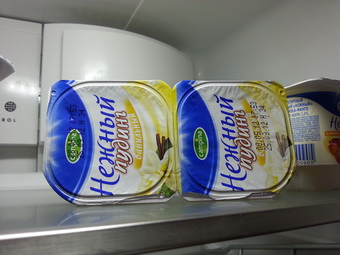
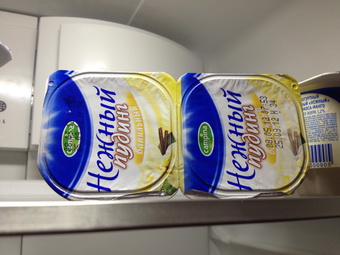

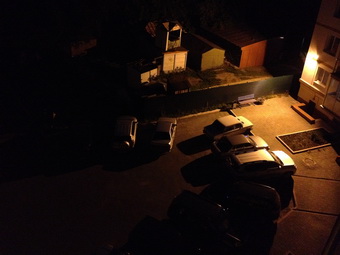
Galaxy S 3 on the left, N8 on the right.
So we were shown a new generation of the galaxy. How new is Samsung Galaxy S3 better than his predecessor S2? Let's figure it out now!
Let's start with the shell, namely the version of the operating system Android and everyone's "beloved" TouchWiz... New Samsung S series works naturally on Android 4.0 with latest version proprietary shell from samsung - TouchWiz... Will the shell on the new generation be different from the past - YES, because the unlock screen has S3 beautiful and pleasing to the eye. :)
By the way, the device will be delivered in 2 colors, this is classic white and the so-called "Pebble color".
Let's move on to the display. The diagonal has become even larger, now it is not 4,3 , but whole 4,8 inches! And it seems that this is the optimal display size for comfortable use of a smartphone. Permits have also increased, now it is 1280 x 720px, but not 800 x 480px which is complete HD... The screen under the protection of a new generation "burned" - Gorilla glass 2 which, according to the developers, protects your device's display even more reliably. Well, the screen itself is made using proprietary technology. HD Super Amoled, and yes, unfortunately, with not the most new technology Pen tile.
Particular attention should be paid to the battery, now its capacity is already 2100mAh, instead of 1650mAh that had Galaxy S2... This move is clearly a huge plus from the outside. Samsung.
True, due to the enlarged display and the volume of the battery, the phone has added in weight and dimensions. Now it is not 116 gram, but whole 133gr, thus the dimensions of the new S-device are 136.6 x 70.6 x 8.6 mm.
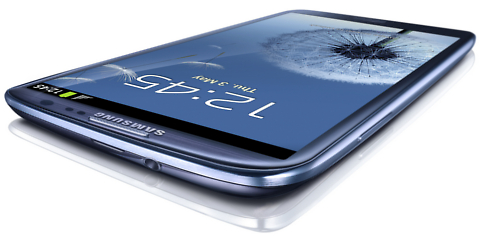
Let's look at the hardware. Only the "heart" of the device has undergone noticeable changes. The performance responsibility now rests with a quad-core processor clocked at 1.4 GHz... How much better will it be Tegra 3 - we will find out very soon. RAM new Samsung Galaxy S3 did not suffer any changes, it is still the same 1 gigabyte, although this is already quite enough for modern applications and games, and besides, it is not Htc with his gluttonous HTC SENSE.
Well, now let's talk about those things that were given special attention during the presentation.
Let's start with S-voice- this is voice control, ala Siri, and if you believe the presentation, then the version from Samsung not a drop inferior to the already popular apple, and in some situations even surpasses it! S-voice supports 8 languages, but Russian is not in this list, as always, which is a pity ...
The second feature is Smart stay, or rather, the control of the screen with the help of the eyes (something similar has already been implemented by the company Sony) .
It is also worth noting about the tandem Wi-Fi and NFC which got the name S-Beam... With this technology, you can transfer files at speeds up to 300 Mbps! We've all seen a 10MB video just jump from one phone to another! The speed race has been really impressive lately!
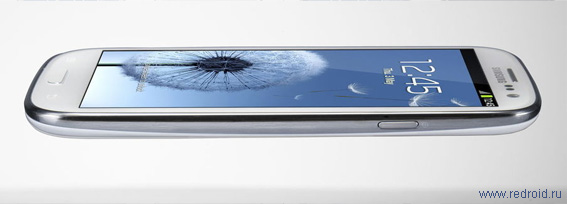
Of the pleasant little things, one can single out wireless charging (although it is necessary to purchase an additional accessory, the price of which has not yet been announced), docking station (again buys separately), 50GB of free space in the cloud service Dropbox etc.
Aboard the new Samsung Galaxy S3 there are two cameras, a front one with 1.9 megapixels and a rear one with 8 megapixels with a new matrix and optics, which only improves the picture from the camera (what else were you waiting for?)... For wireless connection, we have Bluetooth 4.0 and NFC chip, and in addition to the popular Gps navigation, the new Samsung has even Glonass chip!
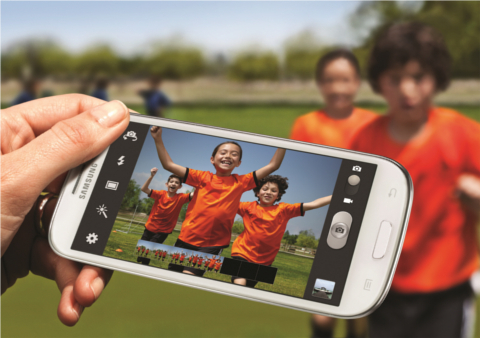
Summing up, I would like to say that there is no special technological breakthrough of the company Samsung it was not possible to do so, although, they undoubtedly released great device that will look worthy on Android market and may even be the flagship among smartphones for this year, with which, in fact, they can be congratulated!


